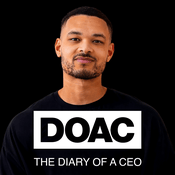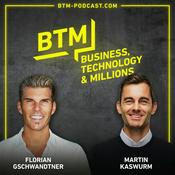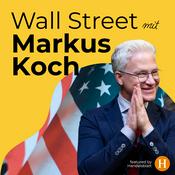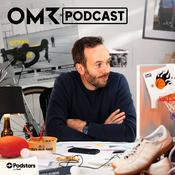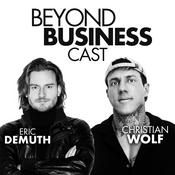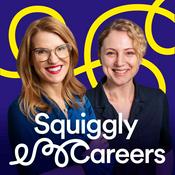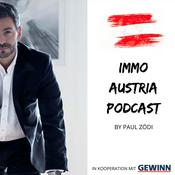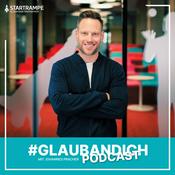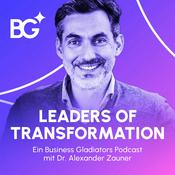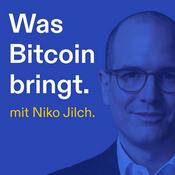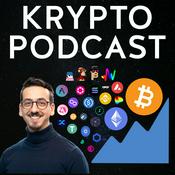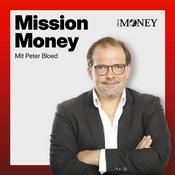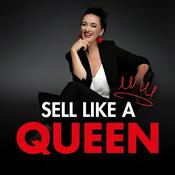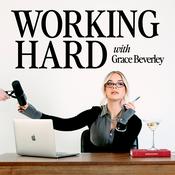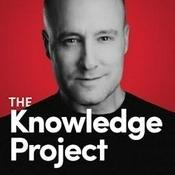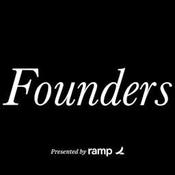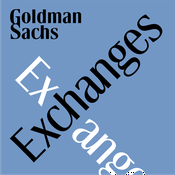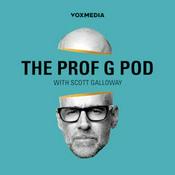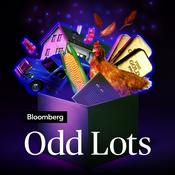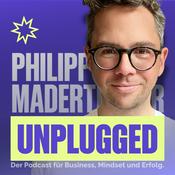Verfügbare Folgen
5 von 45
- Geoffrey Colon: Everything is a Remix, From the First Radio Ad to TikTokA History of Marketing / Episode 42 This week, I’m sharing my excellent conversation with Geoffrey Colon, a creative strategist and author of Disruptive Marketing. Geoffrey is a self-described “hybrid” marketer with a career spanning the full spectrum of the industry, from running street teams for Red Bull to leading brand strategy at Microsoft, with stints at Ogilvy, Dentsu and his own agencies in between. He’s won Cannes Lions, Webby’s, and bylined articles in Fast Company and Advertising Age.In our conversation, Geoffrey draws a direct line between the first radio ads of the 1920s and the creator economy of today. He argues that the most successful marketers aren’t the ones try to invent something new, but those who embrace the art of the “remix” copying, transforming, and combining ideas from the past.Here is what you’ll learn in this episode:* The First Radio Ad: The story of station WEAF in 1922, and how a real estate promotion for apartments in New York City created the blueprint for interruptive advertising methods still in use today.* The Art of the Remix: Why Geoffrey believes we overvalue “originality” and undervalue the power of borrowing ideas from adjacent industries to create something new.* Guerrilla Tactics: A look back at the era of Red Bull street teams, and why physical, guerrilla marketing is making a comeback in a digital-first world.* The Power of Unlearning: Why the age of AI isn’t just learning new tools, but being willing to “unlearn” old ways without falling victim to sunk costs.Be sure to check out Geoffrey’s newsletter at Creative Studies and his popular TikTok.Listen to the podcast: Spotify / Apple PodcastsThank you to Xiaoying Feng, a Marketing Ph.D. Candidate at Syracuse, who volunteers to review and edit transcripts for accuracy and clarity.The First Radio Ad: WEAF and the Birth of Broadcast MarketingAndrew Mitrak: Geoffrey Colon, welcome to A History of Marketing.Geoffrey Colon: Thanks for having me.Andrew Mitrak: You wrote a book called Disruptive Marketing, which we’ll talk a lot about. The very start of the book talks about the first radio ad on WEAF back in 1922. Can you talk about this story and how did you kind of come across this?Geoffrey Colon: So WEAF was a station in New York City. At the time, radio was music and people talking on it. They would do things no different than today. They would maybe talk about what was happening in the world. That’s where most people were getting news, probably similar to how a lot of people get news on a news feed now on a social media app. You would turn the radio on and listen, I think as a group, to sort of figure out, “Oh, what’s going on?” and you would be entertained that way.And at the time, they had to figure out how to monetize radio. It was expensive. The technology to run it was expensive. And I think the station said, “Well, how are we going to make this work? Because we have to figure out how to pay for all of this equipment.” And one of the people there got the idea of, “Well, why don’t we talk about things that need to be promoted?” And they came up with an idea of, “Let’s promote this local housing that was basically available in the Bronx* where families could go live.” And that was really the first radio ad as we knew it.[*Correction: The neighborhood was in Queens, not The Bronx] And that, I guess, was the beginning of the end, if you want to look at it that way, Andrew, in the sense that all media always has advertising that invades it. So you have radio, you have television, you have the internet, you have social media, you have whatever comes next. But advertising always figures out how to invade these spaces where people pay attention to something.Andrew Mitrak: It’s a great story. I’m wondering, reading your book, it was published in 2016. It’s all here and now, future-looking work. And by the way, a lot of the future sort of, the things that you say in 2016 will happen in the future, happened in the future. So it’s very prescient in a lot of ways. But you start the book with this case study from 1922. What was your thinking? Why was that? Why did you feel the desire to start with this particular case study? What lessons did you want readers to draw from it?Geoffrey Colon: Yeah, there’s a tendency of us in marketing and many fields, we don’t really look back on really older history. We have a tendency of looking at things that have happened in the last two, maybe five-year cycle. And what I wanted to do is note like, hey, wait a minute. Here is a case of something that is 80-some years old and it basically explains how almost everything, what happens in every media space.So like when people say, “Oh, the world is about attention and capturing attention,” it’s like, well, that was the case back in 1922 when this radio station decided, “Oh, let’s use attention, people’s attention to promote an opportunity to live somewhere.” I mean, we’ve always been in an attention economy. I don’t think that’s new at all. And that’s what I was really trying to show. And I’ve always been a believer of like everything is a remix. If we go back and study history, it doesn’t necessarily, you know, what’s the phrase? It doesn’t repeat, but it rhymes. And that I think we’re not good as an industry of looking at how a lot of things are remixed and recycled from older eras that we just figure out like, “Oh, how do we make that fit the new era?” This concept of copy, transform, and combine.Andrew Mitrak: Yeah, no, it’s totally true. It’s a theme that we’ve covered a lot on the show of that there’s these things that feel like contemporary debates within marketing or advertising. Is it creativity or is it measurement? Is it storytelling or is it salesmanship? And these debates, they’ve been happening for like 150 years. It’s like a lot of the things, it’s like, “Oh yeah, you could just trace it back.” And it’s not new. And it’s like, gosh, wouldn’t you think like we would just acknowledge that or at least start like, “Yeah, these are debates that have happened. Let’s kind of move forward from there.”Geoffrey Colon: Yeah. Performance versus brand. I mean, a lot of people could say, wait a minute, that, you know, David Ogilvy was talking about that because he was always like, “If advertising doesn’t sell, then it’s not really doing what it’s supposed to do.” We have those debates now in this current era where it’s like, “Well, does it help sell?” It’s like, all right, we’ve been talking about this for 50, 60 years.Andrew Mitrak: Yeah, totally. So one of the things that I like about this WEAF radio case study story is that one of the things is that this idea of radio ads didn’t come from radio people. That it came from like telephone people at AT&T. And that it’s like there was an innovative thing at the time, right? It was radio and it was ads and it was selling stuff and that was a way to monetize it. So there was innovation there, even though it was also interruptive. But it was people borrowing ideas from an adjacent industry and applying them in a novel way. And it seems like that’s a theme throughout your work is that that’s an angle for creativity and for the eye. Can you speak to that idea of borrowing from adjacent industries and applying them?Geoffrey Colon: Yeah, I mean, I’ve always been a generalist, not to use that term, but you know, how do you look at the world that, you know, in a wide manner? And then say, “They’re doing this over there. How do we apply that in our area?” But again, remix it so it fits our area. I sort of cringe when people will sort of say, “We need to go out and get an expert to do this particular job.” And then the job isn’t really creative or the output from that job isn’t really creative. And then people will sometimes be frustrated and say, “Well, it’s not as creative as I thought it would be.” And it’s like, well, yeah, because you’re basically having people who are not really wide, they’re just deep. And they’re doing exactly what you expect them to do.I mean, there’s plenty of areas in marketing where I see this. Like if you market healthcare or insurance, you are probably doing a lot of the same things there. It wasn’t until a couple of years ago when you had organizations like GEICO and Progressive and State Farm said, “Wait a minute, let’s throw that old playbook out because they actually hired people who came from different industries to figure out what their marketing and advertising was going to look like.” So I think, you know, we should take more risk in terms of who can we get that is unique to basically apply their learnings to our field.We’ve seen this in lots of different areas. Even if people say like, “Well, you wouldn’t hire someone outside medicine to work on medicine.” The thing is doctors and scientists are still inspired by lots of areas outside of medicine that they then apply. This is why, you know, you have a lot of medical scientists now saying things like, “Hey, one of the best things you could do is actually fitness.” And fitness doesn’t necessarily fall into like medical science, Andrew. It falls into like, well, wait a minute, that deals with like VO2 max and basically walking and doing things that should really, you know, come natural to people. But, you know, the more you apply things from other areas, the more that actually can lead to some interesting outcomes for, you know, how we basically navigate life.Andrew Mitrak: Totally. You know, this is like another area that even within the guests that I’ve spoken with, I’ve spoken with real like, you know, marketing PhDs, experts, and folks who like are very, very deep into marketing as a discipline. And then I just had an interview that I just recently published with a historian at Nike. And basically the gist of the story was that, you know, their first head of marketing was their lawyer. Phil Knight was an accountant. Carolyn Davidson, who designed the Nike logo, was a student. And all these people who aren’t trained marketers, didn’t learn about the 4 Ps, you know, and didn’t get an MBA, but they just had good instincts, they had a passion, and they made many of the best marketing decisions of all time.And it’s just kind of a thing to square. Like what is it? Is it worthwhile to read a bunch of marketing books and really learn it? Or what does that say when so many like folks who seem like amateurs or are not experts but can make a lot of the same, the right decisions on it? So like, yeah, what’s your reaction to that?Geoffrey Colon: Yeah, I mean, I’m in the middle there. I’ve always been more of like a hybrid where it’s like, I think it’s bad if you’re a person who’s like, “Well, you shouldn’t study anything on marketing. You should just go do it and wing it.” I mean, like there’s a lot to learn from the science of marketing. I think like it’s important to study those things. That being said, I also think it’s good to not be mired in, “Oh, well, that’s the way to do it and that’s the only way to do it.” Because you don’t make up any ground that way, Andrew, when you sort of get stuck with the, “Well, this is how things have worked the last 60 years. That’s what we’re going to continue to do.” Because ultimately that’s what leads to fatigue from most audiences where they’re just like, “I know I’m looking at advertising or I know I’m being marketed to.” And then it becomes less effective.So I think it’s somewhere in the middle. I always tell students who are marketing majors, “Oh, I’m glad you’re doing that. But go build a business too. Go learn how to actually build a business, even if it’s like selling t-shirts online. Just go learn how to do something so you’re not a person that I call the professional managerial class, people who have advanced degrees, but when you say, ’Have you ever built anything?’ they’re like, ’Well, no, I’ve only managed things.’ I’m like, ah, I don’t know if you really, you know, I don’t know if that’s all that you need to do to make things really happen in life.”Andrew Mitrak: Or go sell something as well. Like building something and selling something, it’s like your empathy for a salesperson as a marketer changes so much if you’ve had to like sell and close a deal yourself or things like that where it’s like, yeah, you have to have like life experience to apply it as well.To kind of wrap a bow on the WEAF radio case study, it’s like on the one hand, this is a hundred years ago now and there are still radio ads and there’s still interruptive things. But then part of the lesson is like, can’t we evolve past that? Can’t we get past interruption? But then interruption still exists. And does that just mean that it’s been around for a hundred years, it’ll be around for a hundred more years and there’s that Lindy effect where it’s like it’s just existed forever and it’ll continue? There’s some reason to that? Or is the lesson like, no, we need to really think of how to break away from it? Do both of those things exist at the same time? Or what’s your thought about that?Geoffrey Colon: Yeah, I mean, I think if you didn’t have interruptions, you would just sort of have what we have with streaming nowadays. When I mean streaming, like when a streamer goes on YouTube and is on there for four hours or they’re on Twitch and you’re like, “Wow, like you’re not taking a break at all.” You just, ultimately the audience fades as well from scenarios like that. I’m not saying that everything has to have advertising breaks, but I think advertising when you do interrupt, you can decide what, you know, whether you want to take a break and not pay attention or you may happen to pay attention.I don’t know what the answer is there because I think if you integrate more advertising or more sponsorship into media, people start to get upset about that as well because they’re listening to you talk like you and I are talking and then all of a sudden they’re like, “Wait a minute, they’re talking about something and I think they’re trying to promote it.” And I don’t like that either. So it’s, you know, it’s, we’re in a weird world where we’re always trying to figure out the best way to sell or give awareness to something. And I don’t know what the right answer is.Andrew Mitrak: Yeah, sort of, I guess that’s part of the fun. It’s like an evergreen challenge and we continue to experiment.Guerrilla Marketing: From Ancient Rome to West PhiladelphiaAndrew Mitrak: And so, okay, shifting from that example, I also want to talk about some of the kind of historical moments of your own career because a topic that I haven’t covered at all in the show is guerrilla marketing. And can you just share when did you first start doing guerrilla marketing?Geoffrey Colon: You know, I was really, I got really into like graffiti and street art having grown up not far away from Philadelphia where graffiti actually, the modern graffiti I should say, was invented. If we look at, you know, where graffiti really originated from, there’s cases of it going back to ancient Rome and ancient Greece. But the modern version of it came from Philadelphia and then it was really...Andrew Mitrak: Like the opening of The Fresh Prince of Bel-Air [Laughs]Geoffrey Colon: Correct. Correct. No, that’s actually a good example. And then New York City took it and put it on another level. So I’ve always really been interested in guerrilla marketing because you are doing something out of context, out of the norm. You might be, you may see a blank wall somewhere and you’re like, “Okay, how are we going to take that over and paint it in a way that draws attention to what our product is that we’re doing?” It might be what we’ve seen recently with people setting up real-life versions of people in storefronts and getting people’s attention because they’re like, “Whoa, what is going on in there?” There was a recent case of a B2B product called Ramp that recently did this in New York City.So it’s, you know, guerrilla marketing does exist still. There’s just less cases of it because you can’t track it. You can’t really see what the effectiveness of it is. But it makes for good PR and it can be exciting because you can do stuff that’s just sort of out of the norm that we have usually been doing, I would say the last, you know, 20 years where we sort of stick to the playbook.Andrew Mitrak: It’s funny because you mentioned how you don’t see as much of it anymore. And it is one where as I became aware of marketing, I would hear a lot about guerrilla marketing, right? And I think that in the early 2000s-ish to maybe the late, early 2010s, I feel like I just heard guerrilla marketing as sort of a buzzword a bit. And then I don’t hear as much about it anymore. Is it because it’s been absorbed into normal marketing? Is it just like a PR stunt, I guess? Or is it that there’s actually less of it happening as the world becomes so much more digital? Or it’s not really a digital guerrilla marketing per se and that’s, and it’s not trackable and therefore so much marketing is digital that it’s just less guerrilla is part of it? Is that sort of, like why is it disappearing, I guess is my long-winded way of asking a question.Geoffrey Colon: I think we’ve, I think you hit the nail right on the head. I think we have over-indexed on digital. And so we don’t really put an emphasis on guerrilla marketing because that’s in the physical world, it’s in an analog world. The reason I think it’s starting to creep up again is because people are doing a lot more things in real life. But also a lot of that scales. Canadians actually were really big on guerrilla marketing. They, in Vancouver, they called it culture jamming. That, I mean, like Canada really sort of led the way. I think Kalle Lasn who wrote the book on guerrilla marketing is Canadian. So I don’t know what it is north of the border that made Canadians do that, but I think they saw something that said, “Wait a minute, let’s take advantage of the physical space and then figure out ways to draw attention to ourselves.” And then that’s just, that has spread across the world, you know, pretty much to every territory, every country now does some form of guerrilla marketing for brands.Andrew Mitrak: And as you were early in your career, you were doing some guerrilla marketing yourself. And I think, did you work with the Red Bull street team?Geoffrey Colon: I did. Yeah. That was pretty wild.Andrew Mitrak: What was that story?Geoffrey Colon: I was running sort of my own, this is early 2000s, my own influencer business out of my apartment in Brooklyn. And Red Bull approached me because I used to do a lot of street teams for music releases. Anytime there was something big coming out in the music world, street teams were the most effective way to call attention to that because you still had physical record stores. So you wanted to make sure people knew when something was coming out. And they said, “Hey, we want to hire you to figure out how to do this to get our product out to more people.”And Red Bull at the time was really only popular, the first area in North America that it was really popular was Miami because they sort of figured out how to get the product into nightclubs there. And then they said to the bartenders, “We’ll give you this product for free, but can you push it based on these drinks that you can mix together?” And then more people were like, “What is that?” And it’s like, “Oh, that’s Red Bull.” And that drove word of mouth that then got the beverage to grow off-premise. So it actually started to show up in like delis and grocery stores.But I ran, you know, street teams in New York for a while for Red Bull. And now we still see the cars out there with the can on the back that drive around. I mean, again, that’s a lot of guerrilla marketing as well. Like people will always ask me like, “What do you get from that?” But you get attention. You go to an event, people see things. Sampling was really big. So, you know, we would do a lot of things where we would actually get the can in people’s hands to try it. You know, I don’t see a lot of that anymore.Andrew Mitrak: I don’t know if I hang out in the areas where that might occur anymore. But I know when I was in college, I think that was the very first time I had a Red Bull, I think, was somebody with a car and a can and handing it to me. And being a poor college student, I’m like, “All right, sure, I’ll get some free calories out of this.” And that, I don’t know, I didn’t convert me. I don’t drink many Red Bulls, but you know, it got me to try it and be aware of it a lot.So how did you transition from having your own agency to working at Ogilvy?Geoffrey Colon: I sort of went from having my own to working at a couple of other places. And then, you know, Ogilvy had an opportunity and I was working at a really large digital agency before I went to Ogilvy. And I just was like, “Wow, it would be interesting to be at a big traditional agency at a time when they were really yearning for people with social media and digital experience.” And so, you know, I had a great boss there. She totally got it, was really a good social media marketer herself. And we just were able to apply a really lot of interesting strategy to the clients that we had. But I was also able to learn a lot from like the traditional creative directors there and how things were put together, you know, for what I guess we would consider old media. But I think, you know, when you understand that entire mix of how to buy media, how to make creative, what does that creative look like, what do these stories look like, what’s a customer journey look like? I mean, it’s a good education, I think, to be in an organization like that.David Ogilvy and the Hybrid Marketer: Balancing Creativity and FundamentalsAndrew Mitrak: Yeah, you were kind of talking about how you want to do both. You want to be a hybrid creative, but also you want to know the principles of marketing and you want to know the fundamentals. And it seems like that’s something you get out of a place like Ogilvy is some of the structure and discipline and kind of the big company thinking and almost understand which parts need to be disrupted in a way because you’ve kind of seen how a larger agency works firsthand.Geoffrey Colon: Yeah, and I mean, David Ogilvy is interesting because he has tons of case studies of things that I would consider to be disruptive for their time and place. I mean, a lot of times people are like, “Oh, that’s an old stodgy, you know, advertising agency.” But when you look at the case studies again, going back to how we look at history, it’s like, wait, what, you know, they did then could be applied now. And that can be quite disruptive. Putting an eye patch on someone who is, you get people to pay attention to the fact, “Oh, why does that person have an eye patch? Oh, that’s an interesting shirt.” You know, that’s, those are interesting tactics.Andrew Mitrak: Yeah. So how much, so you mentioned David Ogilvy and you worked at the agency Ogilvy and he had, he had probably retired in what, like the 80s and had passed away by the time you were at the company, right? But was his legacy still there? Like does his legacy a big part of the, you know, it still bears his name, so clearly it’s at some point it’s there. But do they still kind of like give everybody Confessions of an Advertising Man and have them like read Ogilvy on Advertising to sort of understand sort of some of the history of it?Geoffrey Colon: Your first day there, I remember, here’s Ogilvy on Advertising. Everybody gets that book who joins the agency. Yeah. So his spirit is definitely embedded there. There are quotes all over the walls there. I don’t think that I don’t think they’ve tried to move away from their historical legacy like a lot of other larger agencies have.Andrew Mitrak: Yeah, because a lot of other agencies, you know, the one of the names like Ogilvy just becomes an O, like an extra thing in like the big string of letters and it’s like it gets merged in and gets shortened and you kind of lose like who was that guy to begin with. So it’s cool that his legacy was still there. Like what, how was it sort of applied still? Like how does it go from like a wall or some quote to actually like showing up in materials?Geoffrey Colon: Yeah, I mean, every brief there is still originated from what his briefs were. So that hasn’t gone away. And if people are like, “Well, why don’t they update that?” Because it works. Like why change that? It’s because it’s simplified, Andrew. It’s really simplistic. And I think the issue with briefs is we make them so complex that when you get them back, you’re like, “This is 25 pages,” whereas it’s one page with three things that you’re basically trying to do.And I find in this day and age when everyone’s like, “Okay, let me do my hand talking here. Here’s the 70 things.” It’s like, no, no one’s going to remember that because people don’t have the time or attention to remember that. What’s the one thing you really want to get across? I think that’s important in terms of not just advertising, but like anything you’re trying to do in marketing. Whether it’s marketing a product, marketing someone who’s trying to run for office, or marketing anything, an idea. You really need to, you know, this is where the whole elevator pitch comes from. Nobody really wants to be in an elevator being pitched something that they’re like, “Yeah, I don’t understand what you’re saying.” They just want to know like, “Oh, by the way, I have an idea. It takes this and this.” And they’re, “Oh, yeah, let’s actually do that.” So communications skills, I think we’ve made them way too complex for the 21st century. And we can make them much more intelligent again.Andrew Mitrak: As far as the complexity, one of the truisms from David Ogilvy, his principles is like, if you have a successful campaign, keep running it. It’s like you’re not presenting to a standing army, you’re presenting to a marching parade. And the idea that if you have something that works, you don’t need to just like change it up every season just because. And I feel like there is a thing where it’s like people, you know, have the new holiday ad just because and totally rewrite everything just because it’s like a new year. And there probably could be a little more of just repeating a good message, sticking with a good slogan, not rebranding and having a new jingle or whatever. Like, yeah, do you think about that or are there other sort of like lessons that folks should sort of embrace still from Ogilvy?Geoffrey Colon: Yeah, I mean, that’s a big one. Like even modern thinkers like Mark Ritson talk about that. Like he will say, “Why are people running these new ads or why do they have a whole new campaign when they should run the this other one?” It’s one thing if you change a campaign because let’s say the company has new products or features of those products. But if you’re like, “Hey, let’s do a brand campaign.” It’s like, is your brand still based on what it is that you sort of laid the foundation for with this original campaign? Yes. Then keep running that because you’re, to your point, and I love the analogy, it is like a parade. There’s a lot of people who have not probably seen the messaging that you have to keep hitting and hitting and hitting until they realize like, “Oh, that’s interesting, that company.”And I think we’ve seen that in a lot of different areas, people taking that to heart. I just also liked David Ogilvy’s approach to the fact that, you know, he said like, “Your customer isn’t a moron. It’s your wife.” I think I have that quote correct.Andrew Mitrak: Yeah, it’s along those lines, yeah.Geoffrey Colon: Yeah, it’s like we have a tendency of thinking that our audiences are different from who they really are. And I think we’re actually going back to an era where if you understand who the audience is because let’s say you’re marketing something that you yourself use. So you’re like, “Oh, I know who the audience is.” Like that’s way more impactful than people who may say, “Well, this is who we want the audience to be.” That’s very different and that sometimes is delusional, if I may say that word.Andrew Mitrak: Yeah. No, exactly. It’s funny because when I recommend Ogilvy, I say, “He does use some gendered language at the time. Yada yada.” Like caveat, it was a different, I mean, I don’t know if it’s a good excuse, but it was a different time. But like there’s a lot of truth to that. And the intention behind it is actually, yeah, speak, don’t assume your customer is a moron. Like they’re actually intelligent. You don’t have to dumb things down that much.He also was a proponent of like actually having a lot of detail in your ads. And I don’t know if that works totally today on social and of course it doesn’t apply to every format. But in general, like just assuming like sometimes there’s a thing like, “Oh, everything has to fit in, you know, a three-word slogan and you can’t have a, you know, but it’s like actually sometimes you want to read a paragraph of like good copy about why this product is so great or that, you know, that Rolls-Royce ad about how it’s at 60 miles an hour, the loudest thing in this is the electric clock or whatever it was. Like these little things that just like, “Oh yeah, that like totally catches your imagination.” And he’s willing to write longer, which I also also like.Geoffrey Colon: Yeah. Yeah.From Agency to Big Tech: The Microsoft ShiftAndrew Mitrak: So you shifted from Ogilvy to Microsoft, and which is like a pretty big transition. So at this point you’ve been a solo agency owner, you’ve worked at leading digital agencies, you’ve worked at larger ones like Ogilvy, and here you are at like among the top few largest companies in the world and you do a brand leadership role for you. Like what was that like going to Microsoft and what was like sort of the big shift from agency world to, you know, big tech world?Geoffrey Colon: I mean, it’s a huge leap in terms of the learning curve because you’re going from outside a company and really being sort of an advisor because that’s really what agencies are, they’re advising their clients, to being in-house and having to learn everything about the brand. From like the history of the brand, every product at the brand, every failed product at the brand because that comes into play too in terms of understanding evolution. Every solution area that the company was involved in.I mean, there’s a lot to learn there, especially for, you know, when I got there, I think the company was around 40 years old, but it feels like 100 years old because there’s so many things that a company like Microsoft does. So yeah, it was a big learning. And I liked that though. I think, you know, drinking out of a fire hose is good for everyone to do at least once in your life where you don’t feel intelligent, you constantly feel like, “Wow, I don’t know anything.” And you have really, really smart people in the room around you at all times because that’s how you get smarter. That’s how you get better. You don’t get smarter or better by being around people who aren’t really good at their craft. So I think that was a great challenge. I looked back at that era and it’s, it was almost like having an advanced degree on steroids, Andrew, because you’re just like learning how to scale multi-billion dollar businesses.Disruptive Marketing and DisruptiveFMAndrew Mitrak: And so you wrote Disruptive Marketing while you were employed at Microsoft, right?Geoffrey Colon: Yes.Andrew Mitrak: And you’re publishing this and hosting a podcast called Disruptive FM while you were at Microsoft. And did you feel like, were you partly speaking and preaching to Microsoft employees trying to like evangelize a shift in thinking? Or were you more like and also speaking to people outside of Microsoft? Or what was your approach to sort of communicating both within your company and outside your company?Geoffrey Colon: Yeah, it was internal and external. I think what I identified is that regular people on the internet were going to have larger influence than what I guess you would call the mainstream media or journalists. At the same time, I also thought employees were going to have huge influence on how you sell products. And then you were also going to have a huge influence on the other people who work at the company in terms of inspiring them.I think what I identified early on is what you call, you know, the creator economy. This was 2013, 14 where I was like, “Hey, video is everywhere. This is, you know, how things are going to work.” And I remember someone going like, “No, no one’s going to watch video with like regular people or people who like work at a company.” And then I was like, “Hey, I think podcasting is going to be big and I think it’s also going to convert into like audio video like we’re doing right now.” And I remember someone saying, “Nope, that’s not going to happen either.”But the reason I look back on that and I realize why those people said that, these were people who were PR folks who were scared about change because if that changes, then their job, which was pitching people at the New York Times or Fortune or Wired, they don’t see that as relevant. And it’s like, no, no, no, no, you can adapt because you’re just going to be pitching to creators, these people who are all talking about different things on YouTube or TikTok. I just don’t think they could see that, Andrew, at the time. I think they see it now. But I think every company sees that now. So I don’t know. It’s sometimes lonely seeing some of these things, you know, ahead of the curve and at other times it’s pretty interesting. So...Andrew Mitrak: That’s right. I mean, because you’re also, you’re being a little provocative too. You’re talking about disruption and there are probably people where, you know, you kind of criticize MBAs a little bit. You probably work with a lot of MBAs, right? And you’re talking about this old way of doing things and Microsoft is probably doing a lot of those old things. Did that lead to any uncomfortable meetings at all or anything like that? Or what was that like?Geoffrey Colon: Yeah, I mean, I think that provocation, like if you look at how people provoke on the web now, a hot take gets people to, you know, “What? Why are you saying that?” You know, um, I think there were parts of the book that I, when I wrote it, I was like, “I’m going to say stuff that is controversial because otherwise no one’s going to pay attention.” And that’s sort of how the web operates for better or for worse. I don’t think it’s always a good thing that people do that.I think now if I rewrote the book or wrote a second book, I would take a different tone of that’s much more uplifting and has more of a collective leadership style. But at the time, that’s what you did to provoke people out of like a stupor. And yeah, those, I mean, sometimes people would be like, “Nah, this is not, you know, this is not where things are headed. This is always going to be relevant.” You know, that’s not necessarily something I always wanted to get into debates with people about. But, you know, I saw like, hey, there’s a need for creative technologists at these companies. There’s a need for people who understand APIs just as much as saying, “Well, I got my MBA from Northwestern or Wharton.” I don’t downgrade MBAs. When I wrote the book, I didn’t have one at the time. I went back and got one since. But like I think there’s much more of a need of just human understanding from folks that you may not get from an advanced degree.Andrew Mitrak: Totally. That’s right. And obviously the gist is the point of the book is not to like diminish MBAs or anything like that. But it’s to really advocating for this idea of creative hybrids and that there’s lateral thinking and having broad experience that’s not purely just MBA to management consulting to big tech and management with no experience actually building things and being hands-on and being able to draw inspiration from outside of a very specific worldview.Geoffrey Colon: That’s right. I mean, some of my best employees I worked with had like philosophy degrees. Some of the best UX people could also, you know, code or maybe they failed out of being like an engineer and did business. But like we’re in a weird, like to your point, Andrew, we have weird hybrid roles now that you can’t just say, “Well, I’m going to go and major in this.” It’s like you have to have a lot of different subjects and do a lot of different things and have a lot of range to really apply that to the world that we’re currently in or and the world that we’re like moving into.Podcast Marketing: From Niche to MainstreamAndrew Mitrak: I want to ask more about Disruptive FM because you, I’m relatively new to podcasting myself. I was a long, I was a very, very early like podcast listener like back in like when the Ricky Gervais Show was out in like 2005-ish or something like that. That was the first one I got into. But I mean, I’m sure you even predate me on podcasting.Geoffrey Colon: No, no, no, no. That’s about the time I got into things too. 2005-ish. Yeah.Andrew Mitrak: Right around that, yeah, right around then. But you actually were producing like relatively like way early like as far as especially business-wise, there wasn’t nearly as much business-related podcasting stuff. A lot of it was like comedy shows or things like that. But so Disruptive FM, you’re producing that. What did you learn about podcasting as you were doing it in those early days? Like beyond technical stuff or things like that, what was you worked on it for a long time, you’re still podcasting. What is it that you got out of it and what did you learn from podcasting?Geoffrey Colon: You know, the things that I thought people didn’t want to hear about when I would do episodes where I’d be like, “Oh, I’m going to, you know, interview this person who wrote a book.” I have a lot of authors that were on the show. You know, maybe the book wasn’t a bestseller or, you know, no one really knew who the author was. And I’m like, “All right, we’re going to do this. I doubt anyone’s going to really like this episode.” Those were the ones that always did really, really well. Like the niche topics. People loved hearing about that because they would always say the same thing to me, which is, “You know, hey Jeff, I wouldn’t know about that unless you told me about it.”Which made me realize that even in our algorithmic discovery world, there’s still a need for human curators, people who find things and tell other people about them because not everyone’s going to know about every single thing out there. And then when you make them aware of it, they’re like, “Wow, that is like a fascinating topic. I got really, really into that.” So that was a big learning for me early on, you know, before people said, “Oh, there’s tons of people out there who talk about micro topics.” It’s like, yeah, and a lot of them write books. People are really fascinated about that just as much as they are about, you know, the big authors.The Many Benefits of PodcastingAndrew Mitrak: For sure. Yeah, and reading somebody’s book and then getting to interview that person is a magical feeling too because when you read a book, it’s like you’re so removed from the author in a way. And in podcasting, you’d have no reason to really talk to me per se or spend an hour with me. I’m some guy with a podcast and all of a sudden you will and it’s amazing when you just reach out to people and be like, “Hey, I have a podcast. Do you want to talk about your book and talk about other things?” It’s kind of just a wonderful shortcut to get to meet people and have conversations that you otherwise wouldn’t get to have. And I just personally, I enjoy this and I also, I’m sure did you kind of experience that at all as you were just reading books and getting to talk to cool authors on stuff?Geoffrey Colon: Yeah, and in a lot of ways, I mean you bring up a really good point. It’s like exchanging business cards. I know that sounds wild, but when you’re like, “Hey, would you like to come on my podcast, we’re going to talk about this,” you then are connected to that person. It isn’t so much about the metrics as much as, “Hey, we talked, we got to learn some things from each other. This is really great. Now I know you and now I can actually talk to you in the future.” I mean, almost every person I had on, and I had a lot of guests on over the decade that I hosted that show, I mean I could reach out to almost all of them and say, “Could I ask you a question or could I run something by you?” And some of the people I had were nobodies at the time who are now huge. Scott Galloway, Steven Bartlett, Gary Vee, very early on when not many people knew these people. I had interesting CEOs on as well that most of them are retired but I think it’s interesting in terms of, I’m happy that people actually took a chance and said, “Sure, I’ll go on your podcast.” Some people I don’t even know if they knew what a podcast was when I would bring them on because it was audio at the time, audio only until later.The Evolution of Podcasting DistributionAndrew Mitrak: I didn’t think about that. At that time you were probably still having to explain what a podcast was like, “No, it’s not on the radio. No, it’s not a live webinar. It’s a recording.”Geoffrey Colon: This is how it’s distributed, you know, this is how people listen to it. It was at a time when Apple sort of ruled that world. Spotify didn’t have any podcasts, iHeartRadio didn’t have podcasts, Amazon didn’t have podcasts. I mean, it was still the wild west in terms of listenership and people taking a chance on that, but, you know, look at the medium now.Andrew Mitrak: Do you have any thoughts on how it’s evolved as a marketing channel itself? Like when you were starting, obviously beyond it just growing and there being more listeners and more podcasts in the world overall. Has it mechanically as a marketing channel or how brands or individuals think of it for marketing purposes? Has podcasting changed in your career working on it?Video Podcasting and Gen Z Listening HabitsGeoffrey Colon: Yeah. It’s gotten, I mean, some of the early podcasts I remember were almost three hours, like they were long. And you would just talk about everything. It actually reminds me a lot of FM radio. It’s like, “Hey, let’s just experiment and talk.” And they were minimally edited. You did not edit a lot of it because it just was for people to listen to. Now I find if you’re not doing video, you probably are going to have a harder time being discovered. Now, that’s at this moment. I’m starting to hear a shift from Gen Z listeners saying, “I don’t want to watch video. I want to be in my headphones again.” Now this is a, I haven’t scientifically researched this, but I’m starting to hear from more of the younger generation, they want to just listen to some things, but it still has to be theater of the mind. Meaning there’s two people talking, maybe then there’s something they shift to something else, then they shift to something else. So it’s like you have to still keep the audience engaged. And I think the same is true with anything now is it’s not a matter of being short, it’s a matter of like, is it interesting? Do you have interesting people? Are you talking about interesting things? I mean, that’s the biggest learning I think nowadays.The Shift to Fractional Marketing RolesAndrew Mitrak: You’ve had your own small agency, you’ve worked at large agencies like Ogilvy, you’ve worked in-house at Microsoft, which is one of the biggest companies in the world and you have your own practice again. You have your own agency again now.Geoffrey Colon: I do. Yeah.Andrew Mitrak: And how is marketing different across those environments? Just broad question, but what is the same and then what’s different across them?Geoffrey Colon: You know, most companies that I advise now and consult with, they really want people who are immersed in understanding what their company does. So they’re not so interested anymore in let’s hire an agency and they’ll do X, Y, and Z and then they’ll go away. They probably have an in-house team. So the in-house team does a lot, but they still need people who are outside in to keep them honest because if you look at some of the worst work that’s been done over the last five years, it’s been from in-house agencies that don’t have outside advisors. Because an outside advisor isn’t drinking the Kool-Aid of that company, let’s just say. And you need that. CMOs actually want that. They’ll say like, “Hey, we’re going to have a couple outside consultants.” And you know, you’d always be in-house going, “Oh great, we’re going to have this person who doesn’t know what they’re talking about.” But those people actually would just keep you honest about, like you said, “Hey, I don’t know that’s a great idea. Here’s why.” Or like, “That’s a great idea. You’re not going far enough with it to make impact.” So that’s what I’m starting to realize is that fractional work is really changing what our relationship is with marketing. I noted this in the book as well that most of us would be, let’s say, fractional temporary gig workers when it comes to marketing. And that doesn’t mean that all full-time jobs are going away. It just means that there’s probably less of those on the staff. And then everything else is supplemented with other people who may come on board and do something for five months and then they’re done with that particular project. So it’s almost like the future of marketing is the future of work, which is a lot like putting a movie together. “Hey, you’re going to be working on this. It’s going to take us four months to put it together. After that you got to go find whatever your next gig might be.” And I’ve been working like this now for the past year and a half. And I’ll be honest with you, Andrew, it’s scary, but it’s also exciting at the same time because it’s disruptive to make that point.The Power of Being a GeneralistAndrew Mitrak: It’s great. Everything you’ve talked about, I resonate a lot because I think of myself also as a very generalist type person. My background’s in video and in virtual reality production, things like that. And then startup marketing and I’m at big tech now but also do a podcast. And also have some creative outlet where I want to learn about other things. And my career is never like one thing at a time. It’s at least two things sort of. And you have more than two things. It seems like most of the time you have a lot of things going on, which is I think just good. It’s like a good way to have a rich experience in life and just embrace a lot of things and not like that you’re dilly-dallying and just sampling, but you’re doing a lot of things in a meaningful way, but also wearing hats which makes you better at the other thing. It’s like I do this thing here and that gives me an idea for this company over here. And that’s just I think a productive way to be a good creative and a good marketer, right?Geoffrey Colon: Yeah. It almost is like this, I saw this thing recently where someone said Dr. Seuss actually niched up instead of niched down, which is he was a really good writer, but he knew that just writing words wasn’t going to be enough. So he figured out slowly how to do illustration even though it wasn’t the best. But he figured that out and he became world renowned. That is like I think the way that I look at things now. It’s like someone might say, “Are you an expert in this area?” No, and I probably never will be, but I’ll know enough to be dangerous to get by on that with the other things that you need to blend together to make something happen in our sort of creative era that we’re in. That’s really how creators operate. When you talk to a lot of creators, like people will say, “Oh, you’re amazing at this.” And they’ll be honest. They’ll be like, “I don’t really know how to use that. I just sort of figured it out.” And that mindset, we need more of that, especially to solve I think most of the problems in the 21st century because you can’t just be like, “Well, we don’t know what to do there. Let’s just give up.” It’s like, no, you got to figure that out.Adapting to AI and Unlearning SkillsAndrew Mitrak: Yeah, no, totally. And also I think there’s, we’re at this moment of course with AI where a lot of things are like you have to unlearn and relearn things too. And if you have an experience at learning new things, it’s a little less intimidating to unlearn some things because you’re less attached to them. Because it’s only if your whole body of work has all been in one really specific area doing one thing in one specific way and then this new technology comes and changes that, it’s like, “Wow, I have all this sunk cost.” And I have a little bit of sunk cost across a lot of things, but I’m willing to kind of give it up a little more and change it. So I think it’s like overall a pretty healthy thing.Where to Find Geoffrey ColonAndrew Mitrak: Well, Geoffrey, I’ve really enjoyed this conversation. There are a lot of places where listeners can find you online. Where do you recommend people who have enjoyed this conversation find your work and follow you online?Geoffrey Colon: Yeah, I have a website, geoffreycolon.net. I spell my name with a G just for those who are listening. I’m also pretty active on LinkedIn and I have a Substack like so many people called Creative Studies. I’ve also been a lot more active on TikTok. I know that sounds wild, Andrew, but I don’t know, like sometimes I just like to talk about interesting things because you’re like, “Well, I’m just going to bring the phone out and do it and it doesn’t have to be polished.” And people sort of, they like that. They just join in on the conversation. They ask questions. You know, I try to talk about the things in terms of like, “Hey, everything is a remix. Here’s where this may have originated from and we’re seeing it again.” And I think younger people really love that. And I like that too. I think that that’s important in our era where, I think as a person who’s more advanced in my career, I think it’s important to give back to people who are new in their career, whether it’s through time or advice or just listening.Andrew Mitrak: That’s awesome. I love that, you know, you’ve inspired me. I should open up TikTok again. I’ve dabbled in it and I do get scared about it. But here I am, I’m telling everybody to unlearn and relearn. I’ve got to do it myself and get back on TikTok. So I’ll check out your work there and dabble as well. And it’s great. I know a lot of college students listen to this as well. So I’m glad that you’re there educating young people about your career. So yeah, Geoffrey Colon, thanks so much for joining me. I really enjoyed this conversation and it was just such a pleasure to read your book, to read your work, and I’ll keep following you online because it’s all great stuff you’re putting out.Geoffrey Colon: Thank you, Andrew. This is a public episode. If you would like to discuss this with other subscribers or get access to bonus episodes, visit marketinghistory.org--------51:08
- Tracey Panek: Levi's Corporate Historian on Building a Timeless BrandA History of Marketing / Episode 41 This week, I’m joined by Tracey Panek, the corporate historian for Levi Strauss & Co, a company that embraces its past as an active part of its marketing strategy. Tracey’s role sits directly within the marketing department. Among her many tasks is to mine Levi’s archives for authentic stories. “Authenticity” may be a buzzword we hear often, but Levi’s backs it up with primary sources, including patents, artifacts recovered from shipwrecks, and of course, jeans… lots and lots of jeans.Tracey walks us through the brand’s evolution from a dry goods wholesaler serving miners in the California Gold Rush to a globally recognized icon of American culture. This episode is a great case study in how a company can embrace its heritage without getting stuck in the past.Here is what you’ll learn in this episode:* The Patent to Trademark Pivot: How Levi’s transitioned from relying on the functional patent of the copper rivet (1873) to building brand equity through the “Two Horse” trademark once the patent expired.* The “Picks and Shovels” Reality: Why Levi Strauss was originally an importer/wholesaler, and how a customer letter led to the invention of jeans.* Cultural Chameleons: How the brand navigated the shift from John Wayne conservatives to the “dangerous” denim of the 1950s and the psychedelic counterculture of the 1960s.* Campaign Spotlights: The stories behind the sales-doubling “Launderette” ad of the 80s and the Walt Whitman-inspired “Go Forth” campaign.Listen to the podcast: Spotify / Apple PodcastsThank you to Xiaoying Feng, a Marketing Ph.D. Candidate at Syracuse, who volunteers to review and edit transcripts for accuracy and clarity.Bridging History and Marketing at Levi’sAndrew Mitrak: Tracey Panek, welcome to A History of Marketing.Tracey Panek: Thank you for having me.Andrew Mitrak: I thought I’d start by asking you about the connection between history and marketing at Levi Strauss & Co. You’re a corporate historian. What is your relationship to other marketers at the company?Tracey Panek: Well, I’m actually part of the marketing department, so it’s a very close relationship. It’s actually a really great place to be because I can see what projects are coming up and what I can tie into that we can use and provide resources from the archives to. So, it’s a great spot to be in.Andrew Mitrak: One of my research sources for prepping for this interview was a book called Levi Strauss: The Man Who Gave Blue Jeans to the World, written by Lynn Downey. I saw that Lynn worked as a historian at Levi’s. Was she your predecessor? Did she help build this history department, and what did this history department look like when you took it over?Tracey Panek: Lynn was my predecessor. She worked at the company for almost 25 years. She was hired in 1989 to establish the archives. Her great contribution was to help start to tell the stories, was to help try to clear up myths about Levi in particular, but other stories that had been told that weren’t really accurate. She also scoured the world in search of pieces to add to the collection, to build the collection. So when I joined in 2014 at her retirement, there was a great collection in place.But one of the things that was missing is it was a very manual collection. And what I mean by that is it was not digital. If you wanted to use the collection, you had to come in person. There was the need to bring the collection into the 21st century. So I started in mid-year 2014. By the end of the year, we were doing the first photoshoot—we now do this annually—but we were photographing all of the vintage pieces on site. That has been the beginning of a much more digital collection. So we have the physical collection and the digital collection, adding new and exciting pieces along the way.Andrew Mitrak: If she was hired back in 1989, there is sort of a self-awareness about Levi’s place in history, that they know that they’re a historic brand and that for over 35 years now, they’ve embraced their place in history and kind of leaned into themselves as a historic brand.Tracey Panek: Yeah, definitely. Being able to have the archives and have the resources to come up with authentic stories. Today we use that word in marketing, and for me, what it means is that they’ve got to be accurate. They’ve got to be based on primary sources as much as we can, and having the collection allows us to do that.The Early Life and Resilience of Levi StraussAndrew Mitrak: I want to ask you about the life of Levi Strauss, because reading his story, I just felt grateful to be alive today. He fled and escaped Bavaria because of antisemitic laws. The trip across the Atlantic was super dangerous and it seemed miserable. Then once he got to the East Coast, he then traveled through Panama to get to California, and that was really dangerous as well. Do you think these hardships helped shape his character and made him and his company more resilient?Tracey Panek: Well, you’re very right in describing a lot of the hardships that he went through. He was the youngest son in a Jewish family. There were very few opportunities for him to work or to marry with all the restrictions and pogroms that they had. So his father dies when he’s still very young, he’s 15 or 16, and he and his mother and two older sisters decide that they’ll make their way to America. They looked with hopefulness and kind of an American spirit that today we look back on and we call the American Dream. And I think there was a bit of adventurousness and wanting to make a name for himself and his family.He definitely went through a lot, even changing his name when he arrives in America. He was lucky to have a couple of older brothers and they help him to learn about what will be his business, dry goods in the wholesale side of it. So absolutely. One of the stories I love to tell to describe how tough he was and how resilient he was—because you went through a lot and you just had to get up and move on—is 1857. Four years after Levi sets up his company. He’s only been in San Francisco a few years but has managed to be very successful. So successful that by 1857, he decides to send an amount of treasure—I want to say it’s like close to $80,000 in gold.But you can imagine, in 1857, it is worth a lot. And he’s going to send it back to New York where his family is and where Wall Street still is, it’s still the financial capital of the United States. He sends it by steamship down the Pacific down to Panama. It is then loaded onto a train, goes to the Atlantic side because of course there’s no canal at that time, and then another steamship, the treasure rooms are the contents are deposited into another ship and they head up to New York. But off of the coast of the Carolinas, the ship hits a storm and it sinks to the bottom of the ocean floor. And all of that treasure is lost.It’s a huge amount of money. And Levi just has to continue on and not dwell on it. Although I think it’s rather telling that in some of the invoices not long after that date, there is little notes: “Are you insured? Are you insured?” It’s a great story of resilience. I actually bid on and won a piece of that ship. The ship is called the SS Central America, “Ship of Gold” is what it’s referred to as because it’s this Gold Rush era ship. And we have in the archives now a piece of the copper hull plate that’s on display and that is a perfect example of what you point out. You had to be hardy. You had to get up and move on when you’re faced with obstacles and you had to be resilient.Andrew Mitrak: Yeah. That was one of the stories in the book that stood out to me. Like, oh my gosh, this shipwreck and he’s sending a decent chunk of his fortune back. And also like 400-something people die. It’s a really horrible tragedy, all this money lost, but also these people lost. And it kind of also speaks to just the hardships of operating a business at that time, making it to California and the West Coast in the first place, and that that was just how commerce was done, is how things were sent back and forth. Anybody who is coming to the West Coast, they’re making this perilous journey where they can sink, they can get horrible diseases.Tracey Panek: I’ll just mention one more thing about those early years. The other great story about Levi is a year after he arrives in the city, and he’s pretty successful early on, he donates a portion of his profits to an orphanage in the city. It’s still around today, that orphanage, Edgewood. In fact, I went last year to a big event they had there. It set a precedent for giving back to the community and also spoke volumes really about Levi, his Jewish values, his own values about, you know, you go through hardships, but where you can, you try to give back something.Andrew Mitrak: Yeah, that’s great.Levi Strauss: The Wholesaler and the Gold RushAndrew Mitrak: I think of Levi Strauss as the classic “picks and shovels” story, and that it’s not the people who search for the gold who make the riches, but it’s the people who sell the tools that get them wealthy. But also, when I learned about this story in grade school—I grew up in California and they teach you about the Gold Rush then—they taught me as if Levi Strauss was selling the jeans directly to the miners and they kind of pitched that as a story. But it was a little more complex than that. He founded the company in 1853 when he was only 24 years old, but then the riveted denim jean wasn’t invented until 1873. So he wasn’t really selling jeans until much later. So what was he actually selling the miners during the Gold Rush? Because it wasn’t the jeans yet.Tracey Panek: The Gold Rush was an important part of the company’s history. Levi wouldn’t have come to San Francisco were it not for the Gold Rush. He leaves New York where he’s learned from his brothers, but he comes out to make a name for himself. And you’re right, he’s not going to do it by looking for gold. But he recognizes an opportunity to sell, and within a month of his arrival in the city, he’s looking for a warehouse near the waterfront where we still are today, by the way. But Levi, he is prepared for a shipment of supplies that will come a month after his arrival so that he can set up his business very quickly.He is not manufacturing. As you point out correctly, in those first 20 years, he’s not manufacturing. He is importing and exporting and selling things that others are making. And we have an invoice from 1858. And on that invoice, there are things like fabric, drawers, gray flannel shirting. There’s hose, which would be socks, and you can get, I think each of the socks was $1.15 for some hose. And the Hardy and Kennedy wanted to get $128 worth of hose. All of the requests, the supplies that they want, add up to $1,600. 1858. That’s a lot of product. One retail customer. So imagine all of the business that Levi is doing. So you’re right in noting that Levi wasn’t manufacturing, but the Gold Rush and the time that he begins, it certainly molds who he is and his relationships that will be established throughout the West.Andrew Mitrak: The folks in the Gold Rush, they were certainly benefiting from materials that Levi’s imported and sold wholesale to retailers, but they weren’t buying jeans quite yet. That wouldn’t come until 1873. Can you tell the story of how Levi first encountered Jacob Davis and how the riveted denim jean kind of came into play?Tracey Panek: Well, let me first say that a lot of what people read and what you may have read in your own research is myth about Levi coming and bringing denim with him when he arrives in San Francisco and creating on his own, sewing on his own blue jeans. Well, that’s not what happens. He develops a very successful dry goods business within the first 20 years. And he gets a letter in 1872 from a customer in Reno, Nevada. Reno, Nevada is very close to Virginia City where the Comstock Lode silver load has been discovered. It’s a huge discovery. It will help fund the development and growth of San Francisco.And this customer is a tailor in Reno. And he writes to Levi about this remarkable innovation. And it’s so interesting because it’s tiny. A tiny little innovation that will eventually allow Levi to manufacture for the first time and will eventually revolutionize fashion. It’s just a little piece of metal. A little tiny piece of metal, a rivet that’s added to pockets of work pants. And in this letter from Jacob Davis, that’s the name of the tailor, he sends two samples of them and tells them that they are selling like hotcakes and he can’t keep up with the demand. And would the company be interested in taking out a patent to protect his idea? He just knows somebody’s going to steal it.Levi, he’s adventurous as you pointed out, he agrees. The company on May 20th, 1873 is granted a US patent for an improvement in fastening pocket openings. It is the birth of the modern blue jean or riveted denim pant. And in that patent, those patent papers, there’s a sketch with little dots at the pocket area and one at the base of the button fly where the original rivets were. And that’s the story. We celebrate at the company May 20th every year as the birthday of the blue jean or 501 Day, as that garment or overall would eventually be called.Jacob Davis and the Birth of the Blue JeanAndrew Mitrak: Yeah. This really changed everything. Because if you think of how annoying it must be for your pocket to break and rip, because if that’s the thing that gets ripped, if people are using these jeans or I should call them waist overalls, that’s what they were called then, right? They were using them to hold their tools. Maybe if you find some silver, maybe put that in there. And if it’s ripping, you’re just losing everything everywhere, right? And so this comes and they totally lean into this. I just checked the Levi’s I’m wearing, I checked them before I put them on like, it’s right there. Patented May 20, 1873.And it’s kind of unusual, thinking of this as a marketer, that most products, they’ll say the date the company was established, right? You’ll see that EST, such and such date. But it doesn’t say that. It says the date that this was patented. So was it immediate that Levi’s the company started manufacturing and leaning into this patent as sort of their differentiator?Tracey Panek: Yeah, and let me clarify that what you’re talking about is the branding on the rivets themselves. Which is amazing because these are tiny. This is like smaller than a thumbnail. And it’s a little tiny little bit of copper and on that little rivet it says PAT for patent, May 1873, SF CA, SF California, and LS & Co. And all that on the little rivet. Yes, it is on that rivet and that imprint is given to those first manufactured products in 1873, the first waste overalls, those riveted pants. So Levi and the company, they’re very savvy about their branding and know that if they put it on there, you know, it’s something you can recognize. And then of course the Levi’s buttons are going to be branded as well. And eventually they’ll also anticipate the end of the patent, which doesn’t last forever, and start to create something to differentiate between them. So yes, the company leans into it. Levi is still a wholesale dry goods dealer, so the wholesale part of the business still continues as usual. And those riveted denim products will be a part of his business, but they won’t become super popular and bring the business what will happen eventually until much later.From Patent to Trademark: The Two Horse BrandAndrew Mitrak: Yeah, let’s dig into that story. Because then when does it sort of start to emerge? Because you mentioned how patents expire, they don’t last forever. Trademarks, however, last a lot longer. And pretty soon you can see the Two Horse Brand patch that’s on the back and the red imprint on the leather that’s on the back of the jeans. So when did that start to come into play when they sort of evolved from relying on the patent to then sort of trademarking more of their IP around what’s on the pants themselves?Tracey Panek: So a patent doesn’t last forever. It lasts about 20 years. And the company wanted to create something that would be recognizable to customers who wanted to get a genuine pair of Levi Strauss & Company waist overalls. And they created this image of two horses facing opposite directions with a little pair of our overalls in the middle. And the idea is they’re so strong, even if you pull them, you’re not going to tear them. And that trademark was created in 1886. It’s one of the oldest continuously used trademarks in the world. Originally we put it on our garment, on our waist overalls, on the inside pocket. But only the wearer could see that. So then we wise up about that and we put it on the back patch of the garment so that others can see it, not only potential customers as well as our customers who knew us.It was important in a couple of ways. That image could be recognized by anyone who was illiterate, which would have been a number of our workers, our blue-collar workers who wore our products. It could have been recognized by somebody who didn’t speak or write English, because we had a lot of immigrants who were working as well. So it played a number of roles and it symbolized the strength and quality of the product. So it was a great way to easily let people know: look for the Two Horse Brand, and then you know you’ve got a genuine pair of Levi’s.From Trademark to Icon: Levi’s and the CowboyAndrew Mitrak: So, when did the waist overalls themselves, when did that become the majority of Levi’s business? When did they start to sort of divest from the rest of the dry goods part of the business and really lean into the waist overalls themselves?Tracey Panek: Well, it happens slowly. When they bring some of the first trained accountants into the company—this will be members of the Haas family who marry in, who have come with an accounting background in the late teens and early 20s—they start to recognize that this is a bigger seller than they knew. And by the 1920s, they start devoting some revenue to advertisements. So in the 20s, you’ll have advertisements with cowboys wearing our products and feature details being called out. And they’re being produced in a number of languages: English, Spanish, Portuguese, Chinese.And then it’s by the 30s, coming out of the Depression—because the Depression was hard for the company, but everybody around the United States and the globe—when we begin to recover from that, we focus on the cowboy as our marketing symbol and also on our denim, our riveted denim products. Which, by the way, almost immediately include riveted denim jackets, which will add to the line and other riveted denim products. We don’t really pull out of our wholesale business until after World War II. But we had recognized, beginning as early as the late teens, how valuable this product was and started to focus on that more. So it happens gradually. It doesn’t happen just immediately.Andrew Mitrak: When did it grow from primarily being sold to working people just for utility versus being more of a fashion statement? What were the first inklings of people wearing it for something other than just its pure utility and more for the image associated with it?Tracey Panek: Well, we get hints of it because it doesn’t happen immediately. But we get hints of it in the 1930s. In fact, one of the earliest examples of it is in 1935 in Vogue magazine. An article about dude ranching, having a dude ranch vacation, which becomes very popular in the 30s and 40s. People from the East, the East Coast, and even as far away as Europe will come to the West and stay on a working horse or cattle ranch. And they want to have a Western cowboy dude ranch experience, and so they want to dress like a cowboy.And Vogue magazine says, if you’re coming out and you’re a woman, get yourself a pair of Lady Levi’s. The year before, we had introduced the first blue jeans for women. Get yourself a pair of Lady Levi’s, wear them cuffed at the bottom once, with a Stetson hat, a silk kerchief, boots, and a great air of bravado, the article says. And if you can do that, you’re going to have a great time. But here you see people who are dressing not because they want to do tough work, but because they want to dress like someone else. In this case, cowboys or dudes from a dude ranch.And then, of course, you have movies. We’re in California to the south of us in San Francisco. You’ve got Hollywood coming out with leading actors, especially in Westerns, and they’re wearing Levi’s. John Wayne, for example, in 1939, he has his first leading role in Stagecoach and he’s wearing a pair of 501s. So there are a number of influences that will change and lead people to start purchasing not just for practical workwear. And by the 50s, we like to say that’s the decade when denim became dangerous. And a lot of customers will be from those who are joining motorcycle clubs and they want to have some tough clothes as well, but they’re going to get their Levi’s with a leather jacket perhaps, and that look of the rebel, which is implanted in people in the movie like Marlon Brando’s The Wild One.Levi’s and Hollywood: An Organic ConnectionAndrew Mitrak: You mentioned the movies and iconic actors like John Wayne and Marlon Brando. Levi’s, more than most other companies I can think of, is really tied to the movies in a way where there are so many just iconic characters, even very different types of characters, that are wearing Levi’s. You mentioned Stagecoach and how the Westerns were really popular and that presumably people on the East Coast were watching Western movies and seeing Levi jeans and coming to the dude ranch out West and then wanting to get their own Levi’s or their Lady Levi’s. Was Levi’s sort of intentionally making connections to Hollywood to sort of use product placement in a way? Or was it more organic where costume directors and wardrobe folks at Hollywood were just picking out Levi’s because that’s what looked good or what they thought would be good on the character?Tracey Panek: Not in the way we think about it today. Today we have something called the House of Strauss, where influencers, movie, film folks can come and be outfitted in Levi’s. We didn’t have anything like that. But we certainly had good relations with the studios. And we’re in California, our location certainly probably helped. But also, we have many people who are wearing Levi’s. By the 1960s, when you have this rising youth generation who are adopting denim and certainly blue jeans in a big way—thanks in part, I think, to the idea of the rebel and what they’re wearing—then there is a desire to look a certain way, to wear something different from your parents and your parents’ generation, and they do that through Levi’s.Plus, Levi’s are such a great canvas for self-expression. It’s just this lovely tough blue fabric. Even if it tears, you can repair it with embroidery or a patch and it’s going to look cool. So all of these influences will come into play when it comes to the popularity of Levi’s in pop culture and in other subcultures generally.The Shift from “Waist Overalls” to “Jeans”Andrew Mitrak: As we’re talking about this era, at some point, waist overalls become jeans. Can you tell the story of how that transition happened? When did waist overalls—which is just so funny that that was the phrase that was used, jeans just sounds like something that’s existed forever, but no, it’s actually relatively recent—so how did that happen?Tracey Panek: Yeah. So we, I mentioned briefly the rise of the youth generation. San Francisco is the headquarters, the city where our company is headquartered, and we’re a stone’s throw away from the counterculture epicenter, the Haight-Ashbury. And young people are flooding into San Francisco and they are adopting Levi’s and blue jeans and denim in a big way. It was in 1967 when we introduce our first zippered jean, the 505, which is slimmer and intended to be a product that this younger generation will like, that we switch the name on our advertising to “Jeans” instead of the “Overalls” that we had been using.So I think the story of that is, as a company, we’re observant. We are watching what’s happening in culture and we’re paying attention and so we’re responding to that. And that includes not just naming a product for what the young people are calling it, but using their music because that will be another way that they will connect with our products.Andrew Mitrak: Yeah, using their music. On YouTube, I found a radio ad of the Levi’s Jefferson Airplane song, which is amazing and so from the era.And so you’re leaning into this counterculture, but also there is sort of a dance between the John Wayne sort of conservative, actual using jeans for their utility purpose—that Levi’s has probably a large customer base that’s doing that—and then you have the Marlon Brando sort of greaser type motorcycle guy of the 50s, the hippies of the 60s, you even have like rockers and punks of the 70s. And there are different flavors of counterculture that Levi’s is appealing to even as it’s also appeasing sort of the mainstream. How does the company balance both?Tracey Panek: The great thing about Levi’s is its timeless appeal and those working-class roots, which make it a garment that’s not pretentious. If you want to fit in and not be somebody that’s making airs, then you’re going to want to wear blue jeans. So they become really something that so many different cultures and subcultures choose, as you correctly point out in your description of the folks that are wearing them. Even today, I’m pleasantly surprised when I learn about a unique group that I didn’t know about that have been wearing Levi’s and have been tapping into that.So the company, to some extent, works on creating timeless products. Our iconic product being the 501, that waist overall, and still having those products that have been timeless and that you can use and that won’t look dated. Let’s just say that. So you can wear them today, or you could have worn them in the 1800s and they look relatively the same. And in that way, you can use that as a basis for so many different age groups, genders, sexualities—because that’ll be another story in and of itself—who have worn Levi’s. And I think it’s one of the really amazing qualities is the versatility of our clothing.Levi’s Iconic “Launderette” CommercialAndrew Mitrak: One of Levi’s most iconic advertisements is their Launderette ad, which aired in Great Britain in the mid-80s. Can you tell the story of this advertisement?Tracey Panek: Well, by 1985, we’re well established as a global product. And the 501, which is the icon, it is a button-fly denim riveted waist overall—we call it jeans now—but that product, we wanted to give a little love, especially coming out of eras where there were other competitors. And so in 1985 on Boxing Day, which is the day after Christmas in the UK, we launched a commercial called Launderette. And in the commercial, Nick Kamen, who’s this very handsome young man, comes into a laundromat and the ad is set to the music “I Heard It Through the Grapevine“ by Marvin Gaye. It’s just a great song.And he goes into the laundromat and he starts taking off his clothes because he’s going to wash his Levi’s. And it’s busy. There’s other people at the laundromat and they’re looking at him, “What’s this guy doing?” And so there’s certainly a little sex appeal there, but there’s also surprise. He throws his Levi’s into the washing machine and washes them. And that is the ad. It is an incredibly popular ad. It, in estimates from people and reviews that I’ve seen of it and talking to people, it probably increased sales of the 501 by as much as 200%. Thanks to the music, thanks to Nick Kamen who is featured on it. It just hits the right notes in so many ways and it helps to re-energize the 501.Andrew Mitrak: So the creative behind it, BBH, and the person who made it is one of the creatives, is Sir John Hegarty, who’s... he’s knighted. And I don’t think he would have been knighted if it wasn’t for this ad. It’s like, there aren’t that many advertising people who get deemed a Sir and get knighted. And it’s like, he’s one, and it’s probably you could tie it to this Levi’s Launderette ad. He’s had an amazing career, but this, this ad is what he’s most associated with.Tracey Panek: He was a guest speaker just this past year for our marketing team. So it was quite an honor to have him talk a little bit about working with the company and working with a brand that was willing to be very creative.Andrew Mitrak: Oh, that’s great. I love his talks. He’s so inspiring. So that’s cool that you got to hear directly from him with your team.Walt Whitman and the “Go Forth” CampaignAndrew Mitrak: I want to ask you about my personal favorite campaign, which I saw probably around the time I was in high school. It was “O Pioneers!” and “America Go Forth,” and they’re both set to these beautiful poems by Walt Whitman.And they’re filmed in this very impressive cinematography type way that just evokes this feeling of Americana. I loved these ads when I first saw them. Can you share more context about these ideas?Tracey Panek: Those ads launched in 2009. One of the things I love about them is they actually used wax cylinder recordings of Walt himself. So you can hear his, you can hear him speaking, which I think makes it even more appealing and authentic coming from him. And you can hear his, where he puts emphasis on his words. It’s so beautiful, isn’t it? That poetry that you were referring to. And the imagery that they used in the ads was also to support those beautiful words that he says.It was really created as a campaign to inspire a pioneering spirit, the way that Whitman captures it in his poetry. And I think it did it really beautifully. And I recently watched some of those, just the beautiful images with his voice in the background. Just lovely to, and very different from some of the other ads that we’ve done, but very memorable.Andrew Mitrak: Yeah, that’s right. And I think this was one of the first ads that I remember seeing like really tying a brand to Americana. You know, it’s a historical ad. It’s very striking to hear a wax cylinder recording with music behind it. And it struck me that Levi’s wasn’t advertising the rivet, they weren’t even advertising the product. They were like advertising this idea and leaning into a shared history of people. And I’m wondering for you as a historian who’s also part of a marketing team, do you sort of see this trend of Levi’s from going to marketing rivets and marketing their product to marketing ideas like durability to then evolving their brand to talk about things like whole cultural movements and then ultimately shared history? Like, do you sort of see that evolution in how Levi’s has approached their marketing?Tracey Panek: Well, that campaign with Walt Whitman especially, was a nod to our Western roots, especially the old pioneer and coming out West and what it means to be, which really is all about our early history. You know, we were born here in the American West. And for a lot of people overseas or in other parts of the world, we represent what they think of when they think of America. So I think that we did it well.I think that, you know, we’ve used at different times what we’ve felt was relevant for that particular time period. You referred to the Jefferson Airplane and their “White Levi’s” song that you can hear Grace Slick singing. And that ad campaign was from 1967. And they just hit it perfectly. It was the year of the Summer of Love. And at that time, that made sense to do it then. So I think we look at what’s happening and relevant at any given time and try to do our best to respond to that.Discover More Levi’s HistoryAndrew Mitrak: Tracey Panek, thanks so much. I’ve really enjoyed this conversation and having this opportunity to go through Levi’s history and analyze their marketing in a new way. For listeners who want to learn more about your work and the history of Levi’s, where would you point them to?Tracey Panek: I do a series on TikTok called “Greatest Stories Ever Worn” and “From the Levi’s Archives.” You can look for me there. You can look for videos that I’ve done on YouTube. I narrate the YouTube “From the Archives,” the Levi’s Archives series. If you’re looking for more of a corporate kind of thing, you can look for me on LinkedIn and you can find a lot of my content there. And then of course, I also do a lot of the writing for Unzipped, our company blog. So, yeah, several different places.Andrew Mitrak: That’s great. I’ll paste links to all of those in the blog that accompanies this show. So Tracey Panek, thanks so much for joining me. This has been a lot of fun.Tracey Panek: My pleasure. Thanks for having me, Andrew. This is a public episode. If you would like to discuss this with other subscribers or get access to bonus episodes, visit marketinghistory.org--------37:33
- Margaret Getchell: How America’s First Female Retail Executive Built the Macy’s BrandA History of Marketing / Episode 40Long before giant balloons floated down Broadway* at the Macy’s Thanksgiving Day Parade, a remarkable young woman with a prosthetic eyeball developed the beginnings of the Macy’s brand in the 1860s.Her name was Margaret Getchell. She was a marketing visionary who gave Macy’s its iconic red star logo, she captured customers’ imaginations with fantastical window displays, and she cemented the brand’s connection to the holiday season.Even though she was the first female executive of Macy’s, Margaret Getchell’s contributions were largely lost to time. That was until Stephanie Forshee rediscovered Getchell’s story began the work of restoring her legacy.Stephanie published Getchell’s belated obituary in the New York Times as part of their “Overlooked No More” series, and introduced her story to a new generation through her children’s book, Hidden Gems: Margaret Getchell LaForge, which is part of a series celebrating fierce females in business.It’s an inspiring story that gave me new appreciation for the Macy’s brand. Now, here’s my conversation with Stephanie Forshee.Listen to the podcast: Spotify / Apple PodcastsThank you to Xiaoying Feng, a Marketing Ph.D. Candidate at Syracuse, who volunteers to review and edit transcripts for accuracy and clarity.Andrew Mitrak: Stephanie Forshee, welcome to A History of Marketing.Stephanie Forshee: Thank you. Thank you for having me, Andrew. I’m excited to be here.Andrew Mitrak: I’m so excited to speak with you and have a great conversation about the life and career of Margaret Getchell. That’s a name, Margaret Getchell, that I’m guessing a lot of listeners haven’t heard before. You’ve written a piece for The New York Times about Getchell, as well as a children’s book called Hidden Gems. So to start, how would you describe Margaret Getchell to someone who’s never heard of her before?Stephanie Forshee: Yes, I think you’re correct that most people don’t know the name. Margaret Getchell was America’s first female retail executive. She worked for R.H. Macy & Co. during the 1860s and 1870s. She worked with the founder, Rowland Hussey Macy, who was a distant cousin of hers. She started with the company in 1860 as a cash clerk, worked her way up to head bookkeeper, and then made history in 1866 when she was named Superintendent of the store. That means she was the manager of the store, overseeing about 200 employees at that time, which would have been a big deal, of course.Rediscovering a Retail PioneerAndrew Mitrak: As well as that managerial and executive experience, she had a lot of contributions to marketing that we will speak on as well. I’m just wondering, how did you first come across this story? When was the moment where you realized, “Wow, I need to help tell this story and make more people aware of Getchell?”Stephanie Forshee: Early in the pandemic, very early on, when we were still in lockdown, March 2020, I was a business journalist at the time and enjoyed reading about businesses, particularly retail companies. I was nerding out on this book about the history of Macy’s. Within the first few chapters, there was information about Margaret Getchell and some of the early employees of the store. That’s when I learned she was supposedly America’s first female retail executive.I had never heard the name, so I was very intrigued by her story. I was doing a little searching online, and I just thought maybe it was just my ignorance, silly me for not having heard of this woman, but I quickly realized that not a lot of people knew about her or had written about her. There was an encyclopedia.com entry about her and maybe two or three articles about her at the time. She was very uncovered in terms of what she deserved. I started researching her as much as I could and immediately became more and more intrigued by her story. I was very interested in the idea of uncovering information about this woman that very few people knew about. So that was exciting for me as well.Andrew Mitrak: It’s always an exciting rush of a feeling when you discover somebody who has an interesting story and realize it is relatively uncovered. You think everything is covered on the internet, and it is surprising, of course, your book is called Hidden Gems, when there is more to be told here. I’ve experienced that myself, and it is a good rush.Stephanie Forshee: Yes, I can definitely relate to that.Andrew Mitrak: Your background is as a PR professional now, but you had been a reporter as well at some point, so telling stories was in your wheelhouse as well.Stephanie Forshee: Yes, I was a business journalist for about 15 years and worked for various publications. I was always drawn to stories that were sort of off the beaten path. Finding Margaret fit into that narrative, even though it was something completely new to me—covering a historic figure and researching someone like this. That was a whole new process but used a lot of the same skills.From Schoolteacher to Retail ExecutiveAndrew Mitrak: Let’s walk through some of Getchell’s career. To start, how did she get her job at Macy’s? You mentioned that Rowland Hussey Macy, the name of Macy, was a distant cousin of hers. Was that the initial connection for her to start work there?Stephanie Forshee: Actually, they had not met at that point. She graduated high school at the age of 16. She was very skilled with numbers, so she became an arithmetic teacher for a school on Nantucket. Then she traveled to a couple of different cities in New Jersey and New York.Years earlier, she suffered an eye injury. It was a freak accident playing a game of tag with her sister. It was a gory accident where she injured her eye. She didn’t immediately lose her vision, but it was deteriorating over the years. When she was 19 years old, she finally had surgery to have her eye removed and replaced with a prosthetic eye. It is one of those incidents that changed the trajectory of her life.Andrew Mitrak: Just to pause on that—an eye injury. Today that seems gruesome, but in the 1840s or 1850s, just thinking of what eye surgery was probably like back then... there were probably not the same types of anesthesia or processes. It seems like a really horrific, traumatic, formational experience.Stephanie Forshee: I agree. That is something I’ve been researching the past few years—what that would have been like, that time versus today. You’re right, it is not something that anyone would want to endure. But it did shape her as a person and was something she had to deal with.So, when she was 19, she underwent this surgery. This was early in the summer of 1860. As she was recovering, the doctor recommended she should consider a change in career. She had been a school teacher at that point, and he was saying that grading papers by candlelight things like that was probably not too great for her eye. That’s how the story goes. In hindsight, the doctor was probably suggesting, “You’re 19, you need to be married and go about your life.”But she did take it into consideration to change her career. She had heard of her distant cousin Rowland Macy. They had both grown up, he was 20 years her senior, but they both were from the island of Nantucket. He was her distant cousin, even though they never met. She decided to apply there. The meeting went very well; she had an interview with him, she explained that she was skilled, so he hired her as a cash clerk to start, and she made her way up from there.The Humble Beginnings of R.H. Macy & Co.Andrew Mitrak: It’s funny that it all started because a doctor allegedly recommended this change in career. It’s funny tho, reading some of these old books, old biographies, how often doctors would recommend things like, “Go move out West” or “Go live near a lake.” Doctors don’t really prescribe that kind of treatment anymore. A lot of changes in medicine and doctors’ recommendations. Anyway, this may have been the starting point for her meeting with R.H. Macy. The meeting went well. Can you share a little more about R.H. Macy and about Macy, the department store itself in 1860? Obviously, I am guessing, it wasn’t the major brand that it later became. Where was it in its journey? Just started? Was a little more established? Where was it in its establishment?Stephanie Forshee: At that time, the New York store was only two years old. Rowland had other ventures—he really had a lot riding on this because he’d opened stores in Massachusetts as well as California, and Wisconsin, and those just didn’t pan out the way he had hoped. He was not the “Merchant Prince” at that time as he came to be known later.At that time, the store was on its way. Sales were okay; they were definitely growing and surviving. But when she came to the store, it was not a full-fledged department store by any means. It was a dry goods store. The advertising, the signs out front just said cloaks, millinery, silks, and gloves. They had select items, but it was just a small store. Over the years, it would expand greatly.Andrew Mitrak: Can you paint a picture of that time for women in business? Was it common for somebody like Margaret, a young woman, she was 19 or 20 at this time, to get a job at a store, or was this unusual just to work in business at all as a young woman?Stephanie Forshee: In New York, it would be pretty uncommon even just to have this job, much less what she would go on to accomplish. There were definitely women employed by the store, but it wasn’t that common at that point.What is interesting is that she was from Nantucket, so she came in with all the confidence in the world. Nantucket, if you ever visit there or even read about it, they are very proud of its heritage and history. They were known as the whaling capital of the world at that point. Most of the men, the majority of them, were out on whaling voyages for months or years at a time. The women, just like in many times when men went to war, women had to run things. It was like that early on. In Nantucket, they were having to run the post office, the schools, and pretty much the whole town while men were away on these whaling voyages.She would have grown up seeing that in her community. Roland, having that same perspective, knew that women were just as capable. So they were, in a way, in their own bubble thinking that women could do things and run businesses too. But to your point, that was not very common generally at that point. And that would be the 1860s, right before the war. So in the coming years, it would become more common.The Origin of the Macy’s Red Star LogoAndrew Mitrak: That’s really interesting. This connection to Nantucket, and you mentioned whaling, and this actually leads to one of the most iconic contributions that Margaret Getchell has was the Macy’s logo, which was a tattoo that R.H. Macy had, that was a whaling tattoo. Can you tell the story of the logo and how Margaret Getchell helped identify and create that?Stephanie Forshee: She started out as the numbers person, accounting and bookkeeping, and gradually became a trusted confidant of Rowland Macy. She was constantly coming up with ideas. She would say that she liked to “put a bug in his ear” for different things.One of her greatest contributions was the logo. She knew that he had a red star tattoo on his wrist. At the time, I think that he was actually kind of embarrassed by this tattoo or his past as a whaler; it wasn’t something that he was particularly proud of as he was trying to make a name for himself as a merchant in New York at that point. But she saw that and thought it would be a good idea to be an emblem or insignia for the store.She decided to put the red star logo on their letterhead and on each individual price tag and for items within the store, which we will get back to that as well. Macy was one of the first to have fixed prices. Before that, it was all negotiating and haggling on prices. The fact that they had price tags on their individual items was innovative at that time. The other thing is that they put the red star on columns outside the store, which still stand today. The original Macy’s is actually at 14th Street and 6th Avenue; that predates the famous Herald Square location.Andrew Mitrak: I use the word “logo” to describe this red star, but that is kind of an anachronism. It wouldn’t have been called a logo at the time. Logo is kind of a more common thing later. The red star emblem itself has been such an iconic part of Macy’s. Was that somewhat unusual for a company to adopt an emblem like that, or was that common or can you contextualize that decision for them?Stephanie Forshee: I wouldn’t say that it was common. It would have been somewhat unusual, but not restore our business, a logo like this, but it did exist for sure. One of Macy’s earlier ventures, he was in Haverhill, Massachusetts and his logo used a rooster as an emblem at that time in some of the newspaper advertisements. So it wasn’t unheard of by any means, but at that time, they didn’t think it was a “must-have” for a business.Andrew Mitrak: That’s right. If I were to think of them at the time, I haven’t studied this deeply, a lot of them tend to be much more ornate and much more detailed than have the names as part of it and it’s hard to remember. The red star logo or just a star itself, is such an instantly recognizable, simple type of emblem. You can see that Macy sort of wants to use it in different ways, where they’d like to use typography, and it kind of gave them some more flexibility on how to use it. So it seems like a really good decision as a logo and you couldn’t just do a star today cause it seems like so widely overuse. Also, it’s also claimed by Macy as a thing. It seems like it was a really good, prescient thing for Margaret Getchell to notice, latch onto, and embrace as well.Stephanie Forshee: Yes, at the time I think it was just a great idea that she had. To your point, the simplicity of it is what really stuck with people. As you know, it is still the logo today, so it must have been a success.Innovative Marketing Stunts and Store LayoutsAndrew Mitrak: Let’s talk about some of her other contributions to Macy’s, specifically around things like placement and displays. Do you have any favorite examples of her other contributions—clever tactics to help increase sales and attract customers?Stephanie Forshee: She loved thinking different innovations for the store. She was constantly coming up with ideas for different departments. It was her idea to introduce the toy department and the book department; at that time, it would be a bigger draw than today. Unfortunately, Macy’s doesn’t have a ton of books in its stores today.She always came up with new ideas for new merchandise. One of my favorite examples of Margaret’s innovations is that she loved a good publicity stunt. One of the things she did was bring cats into the store. She dressed them up in baby doll clothes and put them in little carriages, or prams as they were called back then. She put those in the window display. I’m sure passersby were wondering, “What on earth is going on?”They were so intrigued and enchanted by these cats. So many people came into the store that day, and they had record sales selling all these baby doll clothes, different accessories, and the dolls themselves of course. That was just one example of creative, out-of-the-box thinking.Andrew Mitrak: Just to comment on this cat thing, and it’s so funny when I read this. I’ve been to a few conferences where everybody has booths in these conferences, and it’s almost like a window display, and you want people to come to your booth. A thing that sometimes people will do is bring puppies. “Oh, we got puppies! Come play with puppies and hear about our company software, B2B SaaS product.” People will be like, “Oh my gosh, that’s so innovative. They got puppies there.” This is kind of just a riff on something that Margaret Getchell did 150-plus years ago. So it’s funny that sometimes, like these tactics that they can be from the past, but still see kernels of that almost today as well.Stephanie Forshee: Yes, I can only imagine this within the children’s department at that time, just hanging out with all the cats.Andrew Mitrak: In addition to cats, any other favorites of yours?Stephanie Forshee: Macy’s had a lot of ideas, and a lot of the New York department stores were following the lead of European department stores. Soda fountains were becoming all the rage. It would have been the late 1860s and the early 1870s. When they were becoming popular, Margaret knew that they needed a soda fountain at Macy’s. Her idea was to place it towards the back of the store so that customers would be eyeing other items as they were walking back and forth to the soda fountain. That is something that we know most stores do today, but at the time, it was a grand idea.Andrew Mitrak: Totally. Today, I think of grocery stores—essential products like milk are almost always at the back of the store. It’s the thing that expires, the thing you often need a refill of. Just thinking of, “What is the thing that will attract people in? How do I make them exposed to more of the products and merchandise within our store to increase sales?” Super clever.The ‘Customer-Obsessed’ PhilosophyAndrew Mitrak: She had this motto: “Be everywhere, do everything, and never forget to astonish the customer.” Do you have a sense of how she actually used that motto? Was it something she wrote down? Was it something she said to her employees? How did that motto manifest?Stephanie Forshee: It’s not exactly clear. It must have come up because many employees said that she had embraced this motto. I would imagine she used it in training, perhaps with the cash girls. I have mixed feelings about the motto. “Be everywhere, do everything”—it is true, if you want to astonish the customer, you do have to do those things. But I think she, as well as Rowland Macy and leadership within the store, were maybe workaholics for sure. From everything I read about them.Andrew Mitrak: To me, it has echoes of Amazon. I am in Seattle, and so Amazon is a big company– It’s a big company everywhere, but it’s one that’s so close to my home– and it sounds a lot like Jeff Bezos. He has this idea of customer obsession, and that’s in their culture. And of course, they are the everything store and so “Be everywhere, do everything, never forget to astonish the customer” seems like it echoes Amazon. And at the time, Macy’s was selling books and all sorts of goods, they were being an everything-type of store.Stephanie Forshee: That’s a great parallel. They definitely took the customer obsession very seriously.Establishing the Holiday Shopping SeasonAndrew Mitrak: I want to ask you about one more famous contribution she had: convincing Macy’s to have the store open on Christmas Eve. I think this was in 1868. Now Macy’s is so associated with the Christmas holiday and Thanksgiving through Christmas season. Can you just share a bit about this decision and the impact that had?Stephanie Forshee: At that time, she was wanting the store to stay open late. It started out on Christmas Eve and would later turn into the entire month of December, staying open late because, as we know, there are lots of last-minute shoppers. She knew that was an opportunity for the store to make more money if they would stay open late. They did, and they had record sales that day. It’s one of those things that today, in hindsight, some people who are working on Christmas Eve and throughout the Thanksgiving holiday might not love Margaret’s grand idea.Andrew Mitrak: There is a trade-off on your priority stack: do you prioritize the customer or your employees? It seems like that trade-off was for the customer at the expense of some of the employees who have to work longer hours as a result.Leadership Changes and Unfair CompensationAndrew Mitrak: Getchell is a pioneer in the business world and she is a pioneer of reaching the glass ceiling at Macy’s. She was promoted to Superintendent, she became second-in-command to Macy himself. But as Macy’s the brand grows, she becomes overlooked. Her time there was super impactful but relatively short, and was not a multi-decade career there. Why do you think it was that she became overlooked?Stephanie Forshee: There are a few things. We haven’t talked about her husband yet, but she did meet her husband, Abiel LaForge, at Macy’s. She was introduced to him through Rowland. He had been a soldier during the Civil War and met Rowland Macy’s son, helping him out. He became a close, trusted person of the Macy’s family. Abiel eventually comes to work for Macy’s years after Margaret started.He was very dedicated to the company, for sure, but he was not coming up with all these innovations and he was not giving the same type of contribution as Margaret. In 1872, Rowland Macy is thinking about future partners of the firm—what’s going to happen if he retires or passes away. He is looking at successors. For some reason, Margaret is completely overlooked in this equation. As much as she was given opportunities before and for the year prior, at this point, Rowland, he did choose Abiel LaForge, as well as one of Macy’s nephews, Robert Valentine. There is no exact reason given. I think simply because she was a woman. At that time, he gave her a lot of opportunities, but it seemed like there was a limit there.Andrew Mitrak: As an aside, she does marry Abiel LaForge. I’ve referred to her as Margaret Getchell, but her full name is Margaret Getchell LaForge, and it does seem like they’re kind of almost both used. I know your book is Margaret Getchell LaForge, but the New York Times’ piece just calls her Margaret Getchell. I wasn’t quite sure which name to use. Do I use LaForge or not?Stephanie Forshee: Yes, so they were married in 1869 and she did take his name. But I think that some people who would just say Margaret Getchell is because most of her contributions really to the store were before her married life. So it was out of respect for that.Andrew Mitrak: I’m going to quote from your New York Times article: “In fact, after her husband became a partner, her compensation was eliminated and she gradually stepped away from her work to care for her children. Having a husband who owned a stake in the business was considered sufficient, as he would support the family with his earnings.” It sounds like her compensation was eliminated before her job was eliminated. To all these points of Macy being tough on employees, that seems really unfair.Stephanie Forshee: When you think about it today, it is unbelievable. You can’t really think of someone not being paid for their job. In a lot of ways, Margaret was ahead of her time. She not only worked when she was married, but she worked through her pregnancies as well. That was really unheard of. She would have already had two children by 1872. When her husband was named a partner, but at that time, that was when her compensation was taken away. With Abiel being a partner in the store, everything was going to be the same pot of money, if you will.Andrew Mitrak: It sounds like that period from 1860 through the end of that decade, she really was full-time Superintendent, rising the ranks, having astonishing contributions. Then from 1870 onwards, it becomes a little less formal.A Legacy Cut ShortAndrew Mitrak: You mentioned that R.H. Macy had been doing succession planning in the 1870s. It is important that he was, because there are a series of tragic endings in a short period of time. R.H. Macy died in 1877, age 54. Then Abiel LaForge dies a year after that in 1878. And then sadly, Margaret Getchell dies in 1880 at 38 years old. Is there anything you’d want to share about her final years?Stephanie Forshee: It is really sad to think, she accomplished so much in the business world and started her own family. For anyone to pass away at 38 is devastating. The fact that she lost the two men she was closest to in her life—her employer, that she grew so close to and her husband—those few final years were extremely hard for her. She had some health issues, things like nerves pain and chronic pain. She ultimately passed away from a combination of heart failure and ovarian issues. As far as I know, it would have been ovarian cancer, though at that time they didn’t exactly know how to treat that. Those final years were definitely marked by tragedy.Andrew Mitrak: It also seems like, certainly tragic on a personal level, but for Macy’s the company, it leaves a leadership vacuum. The steward of the brand and marketing innovation is gone. The founder is gone. Abiel, considered one of the potential successors, is also gone. Who takes the reins at Macy’s, and do any of Getchell’s innovations survive this transition?Stephanie Forshee: A few people stepped in temporarily because it was a very quick succession with Macy and Abiel LaForge dying the next year, and even Valentine. When Macy passed away, Margaret’s husband Abiel and Robert Valentine had intended to and filed paperwork to rename the store “LaForge & Valentine.” So in some way, it is crazy to think of now because of all the tragedies that happened, because they passed away, the store was never renamed. It’s crazy to think that it would have been a completely different name.A few people stepped in temporarily over those next few years. Over the next decade, it was a shorter tenure. It was the Straus family who would eventually become in charge of the store for decades and innovate even further in the coming years throughout the early 1900s.In terms of her innovations and contributions to the store, surviving her legacy, I think in many ways they did. When Macy hired Margaret, because she had been so successful, that encouraged him to hire many more women and promote them to leadership roles. Even though, they didn’t quite get to the level that Margaret did—there were managers and head buyers—but the next Superintendent or two were not female. But there were some positives to come from that.The Enduring Spirit of InnovationAndrew Mitrak: It wasn’t until decades later in 1924 that Macy’s launched the Thanksgiving Day Parade, which is probably its most famous marketing event. Getchell obviously wasn’t alive to see it, but do you see any of her fingerprints on this event?Stephanie Forshee: In some ways, yes. There is nothing you can directly link to say she had the idea for a parade, but just the fact that she was constantly innovating and encouraging others to share their ideas. I think she would be in favor of it and definitely proud that Macy’s came up with this idea and was able to pull it off in a way they have. To see it today, I’m sure she would be very pleased.Lessons from Margaret Getchell’s LifeAndrew Mitrak: Wrapping up, as you reflect on Margaret Getchell’s life and work and you spent a lot of time on her biography, are there any top lessons that you’ve taken away? Are there ways you’ve applied her “astonish the customer” philosophy, or other ways you take her lesson to your own professional life as a marketer and PR professional?Stephanie Forshee: Absolutely. I think of that all the time. I feel inspired by her. I have been writing for the sake of other people knowing her name and learning from her, but I feel very lucky to have been the person to follow her journey and research her over the past few years. The “astonish the customer” philosophy—I am constantly thinking of that.I also put myself in her shoes a lot. I don’t know this for sure because it’s not something she wrote in her diary. I think she must have faced some forms of imposter syndrome or having doubts, being one of the only female leaders. I put myself in her shoes a lot thinking, “Okay, if she can do it, I can do it.” Those are the things that encourage and inspire me.Andrew Mitrak: That’s a really inspiring lesson to wrap up on. Stephanie Forshee, thanks so much for joining. I’ll be sure to post links to your piece in The New York Times as well as your book Hidden Gems in the blog post. Stephanie, I’ve really enjoyed the conversation. Thanks so much for joining me and sharing about the astonishing career of Margaret Getchell LaForge.Stephanie Forshee: Thank you so much. Thanks for having me, Andrew. It was great.*Footnote: In the intro, I mention balloons floating down Broadway. While the parade famously followed Broadway for decades, the route changed in 2009. Today, the balloons float down 6th Avenue, though they still end at Macy’s flagship store on Broadway & 34th. This is a public episode. If you would like to discuss this with other subscribers or get access to bonus episodes, visit marketinghistory.org--------35:17
- Jim Spaeth: An Insider’s History of Marketing Mix ModelingA History of Marketing / Episode 39A recurring theme on A History of Marketing is the tension between marketing as an art and marketing as a science.Lately, we’ve explored the former. David Gluckman shared how he invented Baileys Irish Cream in 1973 based on gut instinct and “the benefit of ignorance.” Scott Reames revealed how the team that birthed the Nike brand in 1971 had no formal training as marketers.This week, the pendulum swings in the other direction in my excellent conversation with Jim Spaeth, Ph.D.Jim’s career places him at the center of the industry’s shift toward rigorous measurement. From his early days at Young & Rubicam and General Foods, Jim pioneered Marketing Mix Modeling (MMM), a discipline designed to measure marketing’s ROI in financial terms and further optimize investments in marketing.* The Origins of MMM: How General Foods used early models to uncover granular insights to bridge the gap between marketing and finance* Connecting Ads to Sales: How the ambitious ScanAmerica venture attempted to measure actual SKU-level supermarket purchases to locally-aired TV ads* Standardizing Internet Advertising: His time leading the Advertising Research Foundation (ARF) during the dot-com boom, where he fought to standardize the chaotic new language of clicks and views* The Future of Measurement: How deep learning and AI are addressing the lingering challenges of causality and creative assessmentIf the last few episodes demonstrated the power of creative intuition, this conversation explores the discipline of proving that intuition actually works.Listen to the podcast: Spotify / Apple PodcastsThank you to Xiaoying Feng, a Marketing Ph.D. Candidate at Syracuse, who volunteers to review and edit transcripts for accuracy and clarity.Defining Marketing Mix ModelingAndrew Mitrak: Jim Spaeth, welcome to A History of Marketing.Jim Spaeth: Thank you.Andrew Mitrak: I’m really excited to speak with you. Prior guests, Shelly Zalis and Bill Moult, both highly recommended speaking with you, especially on the history of marketing mix modeling, which is something that has been brought up on this show before, but we haven’t fully delved into.So, I thought I’d ask you about some of that. And first, I thought maybe we could define that for listeners. So if you were at a dinner party or having a glass of wine with somebody and you had to explain marketing mix modeling to them—to somebody who hadn’t heard of it before—how would you overall describe that to them?Jim Spaeth: I would describe it in a few ways. The simplest is just from what its goal is. It attempts to decompose the contribution to sales of all of the marketing and non-marketing factors that drive sales. And at its simplest, in some ways, it’s to prove that marketing is accomplishing something. To quantify what it’s accomplishing and to measure the return on investment. So, it’s a way for marketing and finance people to talk to each other. That’s kind of one part of it.But also, by understanding all of the factors that are driving sales, you can begin to think about how to optimally allocate budgets, which things are working, which things need help, how external factors that you don’t control impact your sales. So good examples would be things like the weather, the economy, competitive product pricing. You don’t control everything, but you need to react to certain things. So, in a way, conceptually, it’s the engine for an ideal dashboard for a marketer.Andrew Mitrak: And do you think of it more as a backward-looking dashboard analyzing results or more of a forward-looking model of where to apply things? Or is it a little bit of both?Jim Spaeth: It’s a little bit of both. It’s accused of being backward-looking because the problem is, typically marketing mix models need two or three years’ worth of data. So, what they learn or figure—learn tends to make it sound like AI, and these days there is AI in marketing mix, but not always, and certainly there hasn’t been—but what you can infer, I guess is a better way of saying it, from marketing mix is what the impact of those historical activities have been.So if you ran the same television campaign for the last 10 years, that’s what you’re going to understand about, that’s what your model is going to tell you about. It’s not going to tell you about this great new campaign and what it might do. Now, that said, you can use marketing mix to, as I said, optimize your spend going forward based on what historical responses have been. You can use it to forecast, and forecasting can be at a broad level or it could be at a very granular level to help, you know, production, inventory, things of that sort.But you always have to recognize that it’s based on history. So that’s why it has that backward-looking reputation. However, I would say any technique is backward-looking because any technique based on data is based on something from the past. I mean, it might be yesterday or last week or last month, but it’s something from the past. It’s just a question of how far back in the past you have to go.The Origins of MMM: From Marketing as Art to ScienceAndrew Mitrak: You mentioned earlier in your career, you were at General Foods in-house. And by the way, General Foods is probably better known today for the Post cereal brands, is that right?Jim Spaeth: Oh, it was the home of Post, Maxwell House, Jell-O, Tang that went to the moon, or at least in space, I can’t remember anymore. So, it was merged with Kraft, then Kraft has been merged with Heinz...Andrew Mitrak: And so really mass CPG products. Were you involved in marketing mix modeling there?Jim Spaeth: So that was kind of the beginning. GF was the beginning of marketing mix modeling, quite frankly. I would say the prologue is, before that, I worked for nine years at Young & Rubicam when it was a full-service ad agency. And those were the days of the 15% commission, so the agency had a lot of money to bestow many, many benefits and services upon their clients, and they weren’t always squabbling over every nickel and dime.So we had a big, big research department and we did a lot of different stuff. But these guys were thinking about how to use science in marketing. Marketing was an art. I mean, it was just all an art. It was judgment, it was creativity, it was... and it worked. You know, we just couldn’t really prove it, we couldn’t measure it, but you could see it work when well-marketed brands beat the crap out of the more commodity brands, and they could charge more money and get away with it because they seemed to be higher value. So we knew marketing worked, but it hadn’t really been measured and it hadn’t really been submitted to the science of optimization and all those kinds of things. So that work was beginning at Y&R.So, those are kind of the prologue days, really trying to bring science methods, econometrics, and such into the marketing world.An Early Insight: Connecting Stove Top Stuffing Sales with Potato PricesAndrew Mitrak: You worked at Y&R before General Foods. Did having this in-house and agency perspective on marketing mix modeling shape your views in any way? Did you notice sort of gaps or things that didn’t work? Because not everybody has the luxury of working at both.Jim Spaeth: Yeah, that’s a really good, really, really good point. Absolutely did. My knowledge from Y&R of how media is bought and sold made a big difference, because why do you need to learn something when you can’t act on it, right? So, you buy your television largely in the upfront market. While you have some flexibility, you’re pretty much, let’s say, 80% locked in. So, we’re not going to be able to change it anytime soon, whereas radio was pretty nimble, and if you learned something about radio, you could act on it over the weekend and make a change.So things like that, knowing how media really worked was very, very helpful. And then the view from inside the business, inside the food business, was amazing because you really got to see how it worked—both organizationally, how it worked, what the decisions were, when they got made, what the decision-making process was like.I came in initially into the market research department where we began to build an actual, honest-to-God marketing mix modeling practice, which meant, to boil it down simplistically, using econometrics. So using regression modeling and all the sales and marketing data you could lay your hands on. And in those early days, we built models for all of the GF brands.And they were very simplistic. They would just say, “Here’s my sales. To what degree is...” Now remember, we’re talking in the ‘80s now, right? “To what degree does television drive sales versus radio versus outdoor versus magazines? What’s the impact of pricing? What about my in-store promotions? What about my coupons?” So what I just named, seven or eight factors, maybe there would be 10 or 12 factors in a model. My personal big breakthrough was when I discovered that Stove Top stuffing did well when the price of potatoes was high. So, you know, starch on your plate could be Stove Top, could be potatoes. When potatoes were expensive, you go to Stove Top. When potatoes are cheap, Stove Top didn’t do as well. So, that was pretty sophisticated. That was a cross-elasticity in the model. So they were really, really simplistic.Who Actually Used Marketing Research?Andrew Mitrak: When you built those early models at General Foods, who do you present that to, and who makes use of that information? Is it to product groups as far as, “Okay, we’re going to change our products”? Is it to advertising agencies who then use it to inform their campaigns? How does that research actually get put into practice?Jim Spaeth: That’s a very, very good question because that development of that kind of organizational process has been equally, if not more, important than the development of data and statistical technique. In those days, we worked collaboratively. So every division had its own little research group and a head of research. And so we would collaborate with them because we wanted to be somewhat cohesive and consistent in our story. And then ultimately, we would report to the marketing director or the division president.Andrew Mitrak: The marketing director or division president, they are looking at all this information and then they’re using it to just inform their overall marketing strategies.Jim Spaeth: Right. Setting budgets, allocating budgets. That was the primary application, deciding what’s working, what’s not working. Back in those days, we weren’t able to break out creative, so we couldn’t really try to understand whether this particular campaign was working. That has only come very recently. That was a desire from the beginning, but not something we could accomplish.Andrew Mitrak: Did it feel like General Foods was early to this kind of practice? That this was sort of the frontier of using research and analytics?Jim Spaeth: My impression is back then, GF was clearly the first. And it disseminated from there. So one of the reasons mix modeling in its early phase was pretty much just a CPG practice is because people moved from GF to Pepsi, to Kraft, to Clorox, to wherever, and brought the practice with them.The ScanAmerica Project: “Ahead of its Time”Andrew Mitrak: After General Foods, at some point, you get involved with ScanAmerica and Arbitron. Can you tell me this story?Jim Spaeth: That was an early attempt at measuring both product purchasing and television viewing among the same households so that you could look at not the audiences among women, but the audience among Maxwell House purchasers, or frequent Maxwell House purchasers. That was ScanAmerica. That was actually a joint venture between Burke Marketing Services and Arbitron. So Arbitron did the TV part and Burke did the sales part, and they also had expertise in test marketing.So that was very, very exciting, and it didn’t make it. The first of a number of startups that I’ve been involved in that have not been successful but have been exciting and groundbreaking.Andrew Mitrak: It seems like a really ambitious project because this would have been in the ‘80s?Jim Spaeth: Second half of the ‘80s.Andrew Mitrak: The idea really was the ads you’re running, really connecting those to actual purchases and having a set of SKUs that are at a grocery market in an area that saw those ads, and really connecting end-to-end, which seems like a complex, ambitious challenge to solve. It still seems challenging today, especially 40, 50 years ago or so, it sounds like a really tough one.Jim Spaeth: Yeah, it was a little bit ahead of its time.Andrew Mitrak: I’ve worked for a handful of startups and it seems like there’s an interesting thing as a marketer to join a product as part of the vision, right? Where the product is not quite reality yet, but if you get enough people on board and it seems like it could cross the chasm and become real, there’s a big opportunity. So it seems like it’s important to just swing for the fences and try things out, even if they don’t work.Jim Spaeth: Absolutely. That’s been the story of my career. It’s like, when you see it, go for it. And we really, really believed in it. And we had clients who really, really believed in it. It was just too hard to do, too hard, too expensive to do at that time. And the other thing is you run into those organizational issues. That’s I think where I first learned, it may make complete sense, total sense, it might have demonstrable economic benefit, but before you really push too hard, make sure you understand what the industry or organizational constraints might be.Standardizing a New Frontier: The Internet and the ARFAndrew Mitrak: You mentioned the Advertising Research Foundation (ARF), and you became president of the ARF in the mid-’90s. What is the ARF for somebody who hasn’t heard of that before?Jim Spaeth: Sure. The Advertising Research Foundation is, I want to say the oldest... Now, I don’t know how far back the AMA goes, but the oldest or one of the oldest marketing-centric trade organizations in the United States. It was founded by the ANA (the Association of National Advertisers) and the 4A’s (the American Association of Advertising Agencies) because they needed something, they needed to stimulate better research.Andrew Mitrak: Yeah, and I think the AMA was the ‘30s or ‘40s. I’d have to look it up.Jim Spaeth: So I think the ARF actually predates it. And it was focused on advertising because it was the child of the advertisers and the agencies. So obviously marketing is a broader topic, but that’s what their focal point was. And again, many, many years later, ARF was still respected around the world as a preeminent authority with respect to advertising and media in particular, maybe not marketing more broadly or market research more broadly, because you had other organizations in Europe and in Asia and elsewhere. But it’s an organization with global stature that’s been around for a long time and does a lot of leadership. We’re doing some great work right now on this topic of marketing mix modeling.Andrew Mitrak: That’s awesome. By the way, it looks like ARF, based on Wikipedia at least, was founded in 1936, and AMA was founded in 1937. So it predates the AMA. [laughs]Jim Spaeth: Slightly earlier, all right.Andrew Mitrak: Why the jump to ARF after having a career at startups, at agencies, at large CPG companies?Jim Spaeth: The ARF was very important to me personally. The reason is, back when I was at General Foods, the head of research at GF was involved, I think he might have been on the board of ARF. They needed someone with some media expertise in a volunteer role. This was just early on. And he kind of volunteered—he went to my boss and he said, “I want to volunteer Jim for this job.” Which was great because I was a little bit bored, frankly.And I had very little exposure to the outside world. I’d been in my two companies I worked at and was fine and comfortable, but didn’t really get out a lot. So this kind of put me out in the outside world. And I will never forget being in a meeting with five or six legends of the day who were on this committee. They just didn’t want to chair it. And somehow, not because of me, but because of my company, I had the stature to chair it. So they gave it to me. And the kid walks in, not knowing what he was getting himself into, and suddenly I’m talking to these people who I’ve read their papers, I’ve read their articles, I know all about them. It was like... I was awestruck.And I will say, just without making this too much about me, it enabled me to find my footing. And I think that’s what ARF does for a lot of people in the industry. It really brings them on board, broadens their perspective. And a lot of my ambitions where maybe I had something that was innovative I really wanted to push, but the company I worked at wasn’t really quite ready for it, I could go... I had another gig. I could do whatever ARF volunteer work I was doing and kind of try to push the industry in a certain direction. My whole career has been about innovation. What better place to try to drive innovation? So that’s what brought me there.Andrew Mitrak: As far as driving innovation when you’re there, this is the late ‘90s through early 2000s that you’re president, and this is the dot-com bubble era. The rise of the internet and the rise of early digital advertising as well. As I was researching and prepping for this interview, I came across an article that was published in 2002, and I’m going to read you a quote. The article is all about how advertising measurement models are changing as the internet is developing. And I’m going to quote: “We’ve invented this jargon: clicks and ad views and page views,” says Jim Spaeth, president of the ARF. “We need to direct people to standard media terminology and get people to talk the same language.”I’m still talking about ad views... yeah, ad views and page views and clicks. Those are still used today. So I was just thinking of this, putting myself in this era. It’s like, okay, the internet’s developing, it’s brand new for everybody. There’s a lot of uncertainty around it. It kind of sounds somewhat familiar with AI today as well. But there’s new standards that need to happen, people are measuring different things, there’s uncertainty. And then you, as the head of ARF, need to help standardize, need to kind of bring people together. Can you just paint a picture of that era and some of the challenges and opportunities there, and who you needed to persuade to adopt the same language around things?Jim Spaeth: The internet was just happening. You had a lot of really smart people coming on the scene with absolutely no background in advertising or marketing, for that matter. And they were reinventing the world. Now, that’s great, they’re reinventing the world, but as you will appreciate as a historian, it pays to understand where this world came from and what the framework is you’re moving into. Particularly when you think about it from an ad spend perspective, digital was new. It was like novelty money, it was experimental money, it was some extra cash here and there. The bulk of the spend was still... we were spending more in outdoor advertising than in digital, right?But suddenly digital is reinventing everything. So we don’t have impressions, we have clicks, and we don’t have reach, we have uniques, and we don’t... It’s like, can you just stop confusing people? Do you want to be part of the scene, or do you want to have somebody have to have a special training course just to understand your vocabulary? And then by the way, what happens when you put your clicks into a media plan? Do we add them to the impressions or do we have to create clicks for television? It was like... it was kind of stupid, frankly. And it continues.Why Programmatic Advertising was Digital Marketing’s BreakthroughAndrew Mitrak: It continues. It is shocking how little digital was for as far as a percentage of marketing spend for as long as it was, but it grew at a rapid rate. Were there any milestones at standardization that you saw as big wins in this period?Jim Spaeth: I think the biggest breakthrough was programmatic advertising. Digital always had a problem because the audiences to any one thing you bought were so tiny that instead of going out and buying a 12-rated television program, now I got 12% of the country watching me right now. That’s it. Let’s put another one of these in. Let’s put 12 of these in. Now I’ve got a plan. You could do it on the back of a napkin. You could do it on an Excel spreadsheet for sure.But digital was tiny, and you needed to buy thousands and thousands of units to add up to anything. So it was manually prohibitive. Labor was prohibitive. It was not efficient for agencies to do at all until you could do it in an automated fashion, which was supported by the fact that digital is data-driven, right? So there’s metadata and so forth associated with it.So programmatic was possible for digital and absolutely necessary. And it took a while to get it to work right. And I’m not sure it still works right, but... and then we had some experiments trying to do television programmatically, and the early ones were kind of nuts because you didn’t... whatever, it’s a long subject, but they ignored some basic things that we understood from the beginning of time. Like, people pay a lot of attention to ads on primetime, so that’s important. They pay a lot less attention to ads in daytime because they’re busy, if they’re home, they’re busy around the house doing whatever they’re doing. So there’s different value propositions, and that was often not seen in programmatic. Now, attention has become an important variable, which I think is great, and that really differentiates the quality of impressions in a big way.So, automation, right? Sorry, long-winded answer. Automation was necessary and possible for digital. It made it more affordable, and then the other thing that happens is digital has more or less an infinite supply, right? So, as an economist, I would say when your supply is infinite, your price gets really low. So that’s why digital impressions are so inexpensive. “Oh, you want some more? We’ll make you some more.” It’s a little oversimplified, I will say, but that dynamic is at work. So they became cheaper impressions. It was good for advertisers because they were cheap. It was good for agencies because it was labor... it was not labor-intensive, it was efficient and profitable for the agencies. And now, of course, we’ve got television and out-of-home and other media, radio, going through that same kind of automation process now.Recent Innovations in Marketing Mix Modeling and the Impact of AIAndrew Mitrak: Kind of reflecting on this conversation in your career and the development of marketing mix modeling, are there any sort of remaining challenges with it that haven’t fully been solved yet? Or are there still things you would have expected to be more buttoned up and dialed in and more of a solved problem by now that still haven’t been resolved? Are there lingering things where you think, “Wow, more innovation needs to happen in this space that will \pave the way for it in the future”?Jim Spaeth: There’s always that. But you know, I have to say, marketing mix is, in some cases, conducted by bigger companies as a business, and like a lot of businesses, they’re really trying to drive costs down and profits up. Not to say they don’t do a good job, I’m not saying that at all, but it changes the orientation a little bit.And then there are a lot of modeling companies that are driven by entrepreneurs who are really motivated to do a great job. It’s one of the things I’ve enjoyed about being involved in this field is a lot of very highly motivated—and not just about making money, I mean, that’s obviously a good thing—but highly motivated to just advance the state of the art and do a great job.And just off the top of my head, I’ll call out Nancy Smith at Analytic Partners, who has created one of the biggest independent marketing mix companies in the world. I would call out Ross Link, who developed his company and then actually ran Nielsen’s company for a while and is back doing his own thing in his own way. And Steve Cohen at in4mation insights and his partner, Mark, who just keep pushing the envelope. I mean, these people just want to do great work, and it’s so refreshing to see. There’s real pride of their services and their products.Andrew Mitrak: That’s cool. It’s great that it continues to develop and continues to get better, and it’s an area where entrepreneurs continue to make an improvement for folks. Do you have any other kind of final reflections or takeaways on this conversation?Jim Spaeth: You know what is interesting? Kind of just go back to your previous question more directly. The practice, under the stewardship of those people I’ve mentioned and others, has continued to push in the directions I always, and my partner Alice, have always seen as where the benefits are—getting faster, getting more granular, more inclusive. And that just keeps happening, which is great.A big breakthrough was a few years ago, we finally started seeing creative being assessed through these same tools, which was really, really good. So that’s finally happening on a bigger scale, I think, than ever before. And then, the frontier right now is AI, which offers to make certain levels of analysis more possible, affordable than would be if it was all manual.But the other thing with AI and deep learning in particular is, mix modeling was always a bit of an art and a science. The science was the data and the statistics and the models, but the modeler had to look at the results and go, “That’s not possible. Everyone knows when prices go up, sales go down. So what’s wrong with the model?” Right? That was the art part. You had to have a common sense sort of understanding of how these things work because the model can come up with some cockamamie solutions, and you have to really make sure you’re looking at something that really makes sense from every angle.And deep learning—I have not practiced it, but as I’ve read about it and understood it—has a better grasp of causality and can give you more assurance that what you’re looking at is actual causality and not coincidence. I think that’s another important breakthrough. And I hope we see that spread quickly through the industry.Andrew Mitrak: Jim, thanks so much for your time. I really enjoyed the conversation.Jim Spaeth: Great talking to you, Andrew. Thank you so much. This is a public episode. If you would like to discuss this with other subscribers or get access to bonus episodes, visit marketinghistory.org--------26:11
- David Gluckman: Why the Inventor of Baileys Thinks Market Research is Bullsh*tA History of Marketing / Episode 38“Why should all alcoholic drinks taste punishing and challenging? Why shouldn’t they taste pleasant?”My guest, David Gluckman, asked himself this question in 1973. It led him to develop what became Baileys Irish Cream, a liqueur that’s now sold ~2.5 billion bottles globally.In our conversation, David shares the remarkably haphazard origin story of Baileys along with the contrarian lessons from his career creating alcoholic drink brands like Tanqueray No. Ten, Cîroc, and Smirnoff Black.Listen to the podcast: Spotify / Apple PodcastsWe dive into the stories and insights from David’s book, “That sh*t will never sell!” David’s candid about his disdain for modern marketing practices, his frustration with Baileys’ brand extensions, and why he believes great ideas never come from middle management.I also ask David about how brands interact with unexpected internet memes, the ethics of marketing alcohol, and if cavalier marketers like him can succeed in an era when brands have become bureaucratized. Here is my spirited conversation with David Gluckman. Thank you to Xiaoying Feng, a Marketing Ph.D. Candidate at Syracuse, who volunteers to review and edit transcripts for accuracy and clarity.How a Tax Break Inspired Baileys Irish CreamAndrew Mitrak: David Gluckman, welcome to A History of Marketing.David Gluckman: Thank you very much. Nice to be a part of it.Andrew Mitrak: I loved reading your book, That Sh*t Will Never Sell, which is a really fun read. I’m excited to speak about your full career and all of the amazing products and beverages you’ve had a chance to work with. But I thought I’d start off with one of your most famous stories and case studies, and that’s all about Baileys. Could you share the story of developing Baileys?David Gluckman: It all happened very quickly and it happened pretty well seamlessly, as well. We got a brief on a Friday afternoon which said that the Irish government were looking for brands for export, and if they were successful, they’d get a 10-year tax holiday, which is quite significant. But it was just a telephone conversation late on a Friday afternoon.And the following Monday—we had just been in business on our own—my partner came in and I said, “What are we going to do about this Irish brief?” We discussed it and I said, going back to my previous career 10 years earlier, “Is there anything in my experience in the development of Kerrygold butter—branded Irish butter—which we could bring to bear on this?”My partner said, “Well, what happens if we mix cream and Irish whiskey?”So, being an action man, I said, “Let’s go down to the local supermarket, buy some cream, buy some whiskey, mix it together, and see what it tastes like.” There was no intellectualization, there was no identification of a target group or anything like that. We simply—the brief was hot off the presses, so we just started thinking.The mixture of Irish whiskey and cream was pretty disgusting. But I just figured there was something there. So we went back to the supermarket, looked around, and we bought some powdered drinking chocolate. Added it, added some sugar, and I think the realization dawned: Why should all alcoholic drinks taste punishing and challenging? Why shouldn’t they taste pleasant? And what we had with this mixture was a very pleasing, chocolate-flavored drink.I got quite excited by this because there’d never been anything quite like it that I’d come across. So I called up my client and said, “We have an idea in solution to Friday’s brief. Can we talk?”And that’s how it started, really. It was my experience on Kerrygold that was the trigger, if you like, that led to the first part of the solution, which was the product, the liquid.The Benefit of Ignorance: Developing a Drink with No TrainingAndrew Mitrak: Yeah, that’s right. It seems like such a jump. So this, to place this in time, this was the early 1970s.David Gluckman: It’s 1973. That’s right.Andrew Mitrak: 1973 that you’re developing Baileys. And you had worked previously with Kerrygold and on Procter & Gamble products. But it seems like jumping into you mixing the drinks themselves and coming up with a concoction, it seems like a jump. And you were also involved in the branding elements as well. So this is an example of the product being developed with the same people behind some of the branding of the product. I guess, could you speak to that experience of just developing a drink and developing a beverage itself? Did you feel like you had any training or authority to do that? Or what prompted you to actually develop the drink?David Gluckman: I think that not having any training and being fairly ignorant was probably a benefit. Because had we had some scientific knowledge, we would have been deterred by the thought that something that contained cream could survive in temperatures of 40 degrees above zero or 40 degrees below. If you have a certain element of ignorance, you can do anything. If you don’t know what you can’t do, you can do anything.And I think ideas start in different ways, and that’s how this one started. I can’t explain why. We didn’t start like this every time, but I wasn’t averse to mixing products up and changing things around.Andrew Mitrak: There must be so many lessons in this because it all starts with a tax incentive, which is—I wouldn’t imagine, it doesn’t seem like the best reason to start a beverage is because of for tax reasons, but why not? You do that. You mix it yourself with ingredients from the grocery store and it’s, I don’t mean this in an insulting way, kind of dumb. It’s just like, “Oh, that’s Irish cream, Irish whiskey, why not?” It’s not really over-intellectualizing it.And then you go on to develop the name and the brand and the bottle. Can you speak to the next steps of building everything that surrounds the liquid itself? What did that look like?From a Bottle in a Cab to the ‘Baileys’ Bistro SignDavid Gluckman: I was excited, so I jumped in a cab and took it over to my client. And he was just intrigued by what I had in a bottle in my hands. So, not allowing any foreplay, he grabbed it and tasted it and said, “Hey, this tastes really good. Maybe we should do it.”And that was the most important part of the whole procedure because had he turned to me and said, “Look, this is not our thing,” that would have been the end of the brand and the end of the story. But he bought the idea immediately. He just thought it was worth taking to his technical people to see whether they could make it happen.But then he said to me, because he was a man of some impatience, “We must now think about branding.”And I remembered... the best way to start branding is to start with a name, a brand name, because you can’t design a package without a brand name. And I remember talking to a gentleman, the late Tony O’Reilly—very famous businessman, he was for a while president of Heinz in America, worldwide, and also one of the most famous men in Ireland. He said to me over a drink, “If you ever develop a brand that requires an Irish surname, don’t use one like his.”So I said, “Well, why ever not?” I mean, O’Reilly’s, whatever it was, sounded perfectly normal to me. He said, “No, Irish family names have a tendency to sound whimsical.”So that lodged in my cortex somewhere. And I remembered that. Anyway, we were moving office, and as we arrived at our office, there was a restaurant below it called Baileys Bistro. And I think when you’re developing brands, you think about every aspect of the brand almost 24/7. It becomes a kind of an obsession. It’s always not too far from the front of your mind. And when I saw the name Baileys, I thought it was perfect.Baileys Irish Cream. It just seemed to fit. And so I called up my client and said, “Why don’t we call it Baileys?” And he said, “That sounds terrific. Let’s do that.” It’s an Anglo-Irish name. And that’s how the name began.Crafting an Instant Classic: The Design and Branding of BaileysDavid Gluckman: And from there we developed packaging. And I think that in the brief for the packaging, there were echoes of Kerrygold. I said to the designer, “Imagine Kerrygold with all that wonderful bucolic greenness that is Ireland, and build that in. But remember that it’s an alcoholic drink and people will pay a premium price for it. So it doesn’t belong in the chiller cabinet, but on the liquor shelf. So give it some status and some quality.”And he got it almost in one. But in effect, that was the Baileys story. There are one or two bits and pieces, but effectively that was it.Andrew Mitrak: The thing that surprised me is just the time in which this happened. 1973... I was born in 1990 and that, and so Baileys was around before I was born and certainly had been around by the time I became of drinking age. And it just seemed like one of the products that’s been around forever, right? That so many spirits and liqueurs feel like pretty old brands. And Baileys, for me, just seemed—I would have assumed that it was a hundred years old or more, not just invented today, like 50 years ago or so.Did you think about creating a history for Baileys or having it appear to be older than it really was and have some traditions to it? Or did you want it to be perceived as, “This is a new product, this is a new option for you, this is a new alcohol you can consume?”David Gluckman: I think we were governed by the kind of style that attached to alcoholic drinks at that time. You know, there was a lot of heritage, dates going back to the 19th and 18th century. There were idiosyncratic devices, like the bat on the Bacardi bottle. I think the convention was antique and conservative. Although there were brands that were emerging at that time that were much more modern, like Malibu, for example, which didn’t follow those rules.But no, I don’t think so. I think we just had a vision in our mind of what the label and the packaging had to say. And it was all about a celebration of Ireland’s green and pleasant land. And I was imbued with a certain passion for the country through working with O’Reilly and on Kerrygold, and that always stuck with me.‘Benefit Out’: Why Baileys Wasn’t Built for a Target AudienceAndrew Mitrak: You mentioned that there wasn’t a lot of, you know, target audience and persona building and things like that that went into it. Did that come down later, after you had invented it and passed it off? Did the targeting and demographics and how to go to market and where to target first—did that come later after you had handed off the product, or was it never part of it? Was it just a beverage for everybody to begin with?David Gluckman: Well, my belief, I think, is what I call “benefit out.” In other words, I think if you have a product that has something to offer, communicate that to people and it’ll find its own level. So I didn’t have any particular target archetype in mind. People were doing that kind of thing back then, but having been in this particular field for 50 years, I think most of that is bullsh*t.You design a product, make it available. The advertising and marketing people will fine-tune it if you like, but we handed it over the product as it was and left it to the companies. I think it’s one of the saddest things about my job is you develop a brand for which you have a passionate feeling, and then it disappears and perhaps isn’t developed along the lines you would like. But that’s life.The Creator’s Dilemma: Letting Go of a Brand You BuiltAndrew Mitrak: Yeah. So this is something I wanted to follow up with you about because you were a consultant, and you obviously had a massive part in Baileys, from the conception, the ingredients, the name, the bottle, so much of it. It’s you bringing this to life. And then you don’t own it at the end of the day. You hand it off. And you write, “I can remember being introduced as someone who, quote, ‘a man who helped out with the label design.’” And that rankled you a bit, but you let it go. And is it hard to let go of a product that you helped create?David Gluckman: Not really. I mean, I think that the remark to which you refer was made at the launch party in Dublin in 1974. And somebody... I think the Irish are very protective of brands that go out under their name, as they should be. And somebody introduced me not as one of the people who created the brand, but someone who helped with the pack design. Since I have absolutely no graphic skills whatsoever, that rankled a little.And then I think if you look back on things, you realize that for ideas to succeed, other people need to own them. In other words, what this guy was saying is, “This is my brand, not his,” and “I own it.” And I think that’s important. It’s a grown-up way of accepting the situation with brands. But if people start buying into it and feel ownership, then it’s very important.Andrew Mitrak: That’s an important lesson and something I think every marketer and brand person could keep in mind.What Explains Baileys’ 50 Years of Staying Power?Andrew Mitrak: So reflecting on Baileys, it seems like there are just so many spirits that have been introduced and come and gone and had various levels of success over the last 50 years. And why do you think Baileys has had the staying power that it’s had?David Gluckman: Well, I think what amazes me about Baileys is how it hasn’t been superseded by competitors. In other words, it’s sort of kept its position. And I think that’s largely through manipulation of price because Baileys, I think, sells for far less than it ought to. But I think that in that way, Diageo, because of the economies of scale, et cetera, are probably able to prevent any other operator from really damaging it. I don’t think that’s forever. I think that will happen.I hate Baileys’ advertising and I loathe Baileys’ brand extensions because I think they’re cheap and nasty and trivial. And I’ve been quite vocal in my comments along those lines. But that’s... it’s been a long, long dead for me as a brand.Andrew Mitrak: You’ve watched it from the sidelines over the last five decades or so since you handed it off. And they have, you know, Baileys candies and peppermint Baileys and all these new flavors of Baileys. And it’s just like, “Okay, that seems a little...” Parts of it seem a little gross, but it also seems to cheapen the brand and some of the core ideas that you helped develop there.When a Meme Takes Over: Baileys and the ‘Old Gregg’ PhenomenonAndrew Mitrak: The first time I ever came across the brand Baileys was in this viral video that was an early meme called “Old Gregg.”Andrew Mitrak: And I was a teenage boy, like probably 15 years old when this came out. And there’s this absurd sketch that has a line from this character named Old Gregg. And the character asks:“Have you ever drunk Baileys from a shoe?” And this was my first time, I’m like, “What is Baileys?” And still today, within a very small group of people who are give or take five years from me, if I’m at a holiday party or some gathering and there’s Baileys, someone might say, “Have you ever drunk Baileys from a shoe?” And it’s just a silly thing. And I’m wondering, did you ever come across this sketch at all? And do you know if anybody at Baileys had a reaction to this Old Gregg comedy bit?David Gluckman: I don’t. In fact, the first time I saw it was the link you sent me yesterday. Yeah. And I’d not heard of it before. And bear in mind, I went to the Baileys 50th-anniversary lunch recently, but that’s the only connection I’ve had with the brand since the 1970s.Andrew Mitrak: There’s an interesting thing where there’s meme culture of the internet. There are these people who like share things, and brands don’t always have control over that. That the internet—you bring a thing to life, and then some comedy sketch makes a silly joke and has your product being drunk out of a shoe. And no control over your product whatsoever, but sometimes the internet just will run with a thing. It just seems like an interesting little case study of what a lot of brands deal with, where there’s some meme that now comes across on the internet that a brand has to somehow choose to embrace, choose to ignore, or just choose to live with for a bit. And it just seems like an interesting element of today’s media culture of how a brand might have to interact with the online universe.David Gluckman: Well, again, that’s beyond my pay grade. You know, the brand has been handed over, and I either jump up in the air with delight or cringe when I see the way it progresses. But you know, that’s life.Why Great Ideas Start at the Top, Not in the MiddleAndrew Mitrak: You go on through your career and it turns out okay. You work on a number of great brands: Tanqueray No. Ten, Smirnoff Black...David Gluckman: Cîroc.Andrew Mitrak: Cîroc, yeah. And more, the list goes on. And rather than tell the story of each of those, I’d also, in your book, you also talk—there are these themes that come through your work as well and lessons that you’ve learned from all of them. And I thought we could talk about those lessons, and maybe some of your stories of those other brands you worked on could come through that.And one of the lessons that I totally identified with is that successful ideas don’t start in the middle of the organization. They start at the top. And that you need corporate cojones, you need leaders—usually the president or CEO or founder—to have conviction and make bold bets for a product to succeed, for a brand to succeed. Can you expand on this idea?David Gluckman: Yes. What happened was that roundabout the time... I think I started in brand development in ‘69. Around ‘72, I think, an American called Tom Peters and a colleague called Robert Waterman wrote a book called In Search of Excellence, which we read. And we got very excited by this book because it talked about how companies worked, how big—and these guys were McKinsey consultants, I think—and they were talking about what it was like being inside big companies. And we came to various conclusions. It took a long time for these conclusions to bed down, but I think they’re very appropriate now.One, that you could never develop a successful new brand if your path to development was through middle management because middle managers didn’t have the power to make things happen. So what IDV did, which was before it became Diageo, was instituted a thing called the “champion system,” which we got from Tom Peters, which said that anybody could commission a new brand provided he or she had the power to make it happen.So we were getting top members—we had the finance director come in with a brief—mainly top-level management because, A, top-level management weren’t interested in the mechanics of doing something. A middle manager has to go and spend hundreds of thousands of dollars researching an idea to prove to his people above that it’s going to work. We didn’t have that problem. You would simply be asked by your client, “Will this work?” to which the answer was, “Yes, I think so, but I’m not sure.” And you can never be sure whether something would work.So we had this top-down approach. The other thing is we didn’t engage marketing people. None of the brands we developed went down the marketing route or were developed through the marketing route. Marketing was very successful in making the brands work, but we didn’t use marketing. We didn’t use that constant desire to prove everything. If you look at Baileys and deconstructed it, nothing would have been as it was if we’d gone through the marketing route. Everything would have been questioned and debated and alternative before it happened, and might not have been quite such a successful brand. So we had a different way of working.“Don’t Go Through the Marketing Route”Andrew Mitrak: I want to follow up on this idea that you don’t go through the marketing route because something that I’ve thought a lot about on this podcast series is I want to cover the stories of a lot of the greatest marketers of all time. And within business, the greatest marketers of all time within companies, very rarely would you think that it’s the CMO, actually. If you look at a list, you’ll see it’s often founders or CEOs that have very strong marketing instincts. Steve Jobs, Walt Disney, Oprah Winfrey, Lee Iacocca.David Gluckman: A lot of people in the drinks business: Sidney Frank.Andrew Mitrak: Yeah. And it strikes me that a lot of the best... if you ask somebody, “Who is one of the best marketers in the world?” they usually won’t name somebody with “marketing” in their title. They’ll think of a CEO or founder who has really strong instincts. Do you have a reaction to this?David Gluckman: I think that’s true, and that’s certainly been my experience. The best people I worked with were board directors. O’Reilly was a fantastic guy to work with because he could take a decision. And he’d take a decision—I was a junior executive, aged 24—and if I came up with something that he thought was interesting, we’d do it.Whereas with marketing, you go through strategic analysis and you look at target audiences and you spend buckets of money doing market research. I remember I did a pitch to Unilever 30 years ago, and I said, “If I ran your business, I would cut your research budget, your market research budget, in half, and then I’d halve it again. And get people, A, to use their brains more, and B, to look at the data you already have.” I didn’t get the business, but that wasn’t a surprise.Andrew Mitrak: That is funny. It is interesting how often a company will always want to commission new research, even if the company’s been around for a very long time and probably has decades of existing research you could draw from and draw conclusions from faster and more cheaply.Why Buying an Idea is as Important as Creating OneAndrew Mitrak: Another idea of yours is that the person who purchases the decision deserves as much, if not more, credit than the person who comes up with the idea. Can you speak to that or can you articulate what this idea is?David Gluckman: This is something you learn over time. Ego plays such a big part in this whole business in which we work. But when you come to think of it, if somebody had said, “Look, I don’t think this chocolate milk stuff is our kind of thing,” that’s the end of the story. I think the people who buy ideas are not given nearly enough credit for that. I would say that every single idea of mine that got out of my office and into somebody else’s and worked was down to the person having the ability to buy the idea on an argument, because we never spent any money on research. We figured it was a complete waste of time.Because if you get nine out of 10 consumers thinking an idea is good, the chances are it’s mediocre because you’ve just reinvented your competition. Good ideas will get two passionate people out of 10 loving it and the other eight hating it, and you build from there. But you can’t use that as a tool to sell it to your marketing guy. Two out of 10 people think it’s a brilliant idea, you ought to go with it? No chance.Andrew Mitrak: So how does this change your behavior over time, knowing that you’re really dependent on the person buying the idea? For me, for instance, this totally resonated with me. And I know that I almost treat my ideas a little more cheaply in a way where there was a time, especially early in my career, when I feel like I had a good idea, I’m like, “Oh, this is so precious. I shouldn’t share it with anybody. I should really develop it for a long time.” And now I’m like, whenever I have an idea, I just share it. I try to get it out there. And I know whether it gets adopted or not, I’m not going to feel too bad over it. Of course, I’d like things to succeed and be adopted, but just get it out, share the ideas, be confident you’ll come up with more ideas. And if somebody buys it, great. And of course, do your best job to try to sell it, but if you don’t, try to not let it be out of your control. Is that your thinking about it, or are there other ways we should treat our ideas differently, knowing that really their success depends on somebody buying the idea?“There’s No Plan B”: Why it’s best to pitch only one ideaDavid Gluckman: When I worked in advertising in London in the ‘60s, there was one agency called Collett Dickenson Pearce, which I think was one of the best agencies in the world in its time. But they only ever produced one idea in response to a brief. When they went to a client, they said, “This is what we think you should do.” And there were two ways out of this: the client would give them good reason not to do it, in which case they’d do another one, or they’d fire the client and look for somebody else.And at the time, we were just amazed—working in more conservative agencies—how could they do that? How could they just go with one idea? But I think when you engage with the business of creativity and the business of solving problems, you realize that there can only be one solution within your capability. Now, I’m not saying it’s the perfect solution. There might have been a better idea than Baileys, and there may be better elements in brands. But I think if you’re really true to what you believe, you go with one idea.To the point, I had this long relationship with my client. I remember once going with two ideas, and my client said to me, “You haven’t solved it, have you, if you’ve got two ideas?” And I said, “No, I haven’t.” So they said, “Go away and come back with one.”Andrew Mitrak: Yeah, one of the quotes in your book is, “There’s no plan B.”David Gluckman: I think that’s what we had to do. After Baileys... when I started, the first pitch I ever did, there were 48 ideas. That was because we weren’t sure what the client wanted, and the client wasn’t sure what they wanted either. So there were 48 solutions. Whereas once things became more specific, you could look for one idea.Innovation vs. Renovation: The Case for Inside-the-Box ThinkingDavid Gluckman: The areas I... I think there’s a lot of glib nonsense talked about my particular field. The word “innovation” is used because somebody comes up with a turnip-flavored Smirnoff or something. But that’s not innovation. That’s something that you knock up on a Friday afternoon after lunch. That’s not innovation. Innovation is something new and doesn’t happen all that often.I have this... you know, people talk about breaking paradigms and disrupting markets. Most of that’s complete bullsh*t. My counter-theory to this is what I call “inside-the-box thinking.” I think most of the thoughts and ideas that have been any good that we’ve produced have been from inside the box, from looking at past research that people have done, just reading through documents and reports. From looking at... coming up with ridiculously obvious observations.Like, I remember when we did Tanqueray No. Ten, the observation upon which it was based was: Did you know that there’s 10 times as much vodka sold as gin? So why don’t we try and get vodka drinkers to drink our gin? And how do you do that? You take out all that juniper flavor and tame it down and make it fruitier and fresher-tasting. Now, that’s inside-the-box thinking because that’s based on data that’s already there.Andrew Mitrak: I love this idea of inside-the-box thinking. Do you have some practical guidance or a few tips for embracing this, for discovering ideas that are hiding in plain sight?David Gluckman: Well, I think you have to disregard consumer research because I think it’s a very blunt tool. And I say that from having done hundreds of focus groups all around the world, many, many in America. But you don’t have to go and ask consumers what to do. There’s a legend on the front of my book, which is the story of the man who sold the world what it didn’t know it wanted. And I think that’s what you’re doing. You’re trying to develop things that people didn’t know they wanted. I think that’s quite an important... you know, if you take the research route into innovation or development, you just end up with what people say. Can we produce a product to compete with Red Bull that doesn’t taste quite so ridiculous?The Rise of Non-Alcoholic Beverages (and Their Puzzling Price Tags)Andrew Mitrak: Back to alcohol brands, you’re mentioning the brand extensions that Baileys has done over the years. It seems like there’s this tension between alcohol beverages wanting to be part of cultural trends and to be innovative, but also that there’s this history and this tradition to it, right? Johnnie Walker has been around for 200 years, but I remember not too long ago when they were releasing all these special Game of Thrones editions to their brand. And similar with Guinness, you know, it’s a big piece of Irish pride, they’ve been around for hundreds of years. I hope they don’t mess with the recipe too often. But now I’m seeing the alcohol-free version of Guinness. And I actually think it’s pretty good, as far as non-alcoholic beers go. But it’s very different than traditional Guinness, and it almost seems like sacrilege to mess with Guinness, right? So, do you have thoughts on how brands both stay true to their values, their history, and not damage their brand with too many brand extensions, but still want to try new things and to innovate and be relevant?David Gluckman: I’m quite an outspoken critic of the non-alcoholic category, particularly wines and spirits. I bought a bottle of Gordon’s a while back, Gordon’s Zero. And it cost a pound less than a bottle of full-strength Gordon’s. And when you think about it, what you’re paying for that money for is gin-flavored water, which is crazy, really. I mean, gin-flavored water for £14.Andrew Mitrak: You’re totally right that, especially with a spirit or wine, the trend to go from like 14% to 0% just seems like almost too big a jump somehow. I think it works better with beer, but the pricing of it doesn’t make any sense to me at all. That if you look at the non-alcoholic beers at a supermarket, at least here in America, basically the same price, sometimes even higher than the alcoholic ones. There’s a thing called hop water, which is like the hops in an IPA beer that are infused in water. And sparkling water will be 30 cents a can here, but hop water will be like $2 a can or more. And it’s like, why is that? It’s just sparkling water with a different sparkling flavor.And then mocktails, if you go to a restaurant, there’s this thing called a mocktail instead of a cocktail, and it’s juice. It’s just juice! But it’s priced the same way a high-end cocktail is, and it just seems crazy.David Gluckman: Yeah, exactly. I find it strange. I had some non-alcoholic product, which I will not name, the other day, which cost, I think... on a 70cl bottle, which is our unit size here, cost about £42. And a bottle of Johnnie Walker Black Label, where your capital has been locked up for 12 years in a warehouse, costs £35. I think that’s just crazy, really, that you’re paying for a kind of flavored squash thing for £7 more than Johnnie Walker Black. It’s ridiculous. But that’s the way the world works.Marketing Alcohol and Navigating the EthicsAndrew Mitrak: I want to talk about this trend towards non-alcoholic beverages because I think it does coincide with more awareness about the negative health impacts and societal impacts of alcohol. People are almost willing to pay more because it’s perceived as healthier. Do you think that’s part of it?David Gluckman: It’s in part. I think we went there in 1984. The guy to whom I reported at IDV, who was a global director of the company, said to me one day, “Well, look, I think that alcohol is going to come under attack.” This was 40 years ago. He said, “Alcohol is going to come under attack.”We were amazed at how successful Perrier was, especially in the US. Because to me, Perrier is just soda water with history. And so we looked at developing a series of non-alcoholic products, which we did, and they were quite successful, except the company committed too much money. They set up a separate organization to manage it without having the critical mass of some big brand to make it successful. But we were there then. We had developed a brand called Aqua Libra, which was incredibly successful in the UK for a while, and another drink called Purdey’s, which is now owned by Britvic. So we went down that route. But the company, I think at that time, went into the merger and took the decision that their business was alcoholic beverages, not non-alc. So they were dismissed.Andrew Mitrak: I do want to ask you about this a little more as well because on the one hand, I’m mesmerized by the capabilities of developing an alcoholic beverage and the marketing around it, and iconic campaigns. Absolut Vodka, the Super Bowl is so full of great beer advertisements that people will talk about for weeks afterwards. So a lot of the best marketing and branding and advertising is around alcohol, but it is something that does have societal harm to it. My family has a history of alcoholism, and I’ve seen firsthand it’s had really, really bad impacts on people. And I’m kind of... it’s a tension because I can both admire the brilliance that goes into developing the products, but I can also see some of the harm that the products have had on people and in society.Does that ever come up? How often does that come up as you were working on these products, as you work in this industry? Do folks think very much about that and how they reconcile some of the negative impacts of the products they’re selling?David Gluckman: There was always that background feeling, as there would be with cigarettes. You know, should I be doing this? Is this the field in which I should be engaged? And because I smoked when I was younger, I would never have taken on a cigarette brief, I don’t think. But alcohol... well, it was there in the back of my mind, but it didn’t stop me from working in the category. It was just so interesting. And the laws protect us from selling booze to children and things like that. So that’s an adult decision.Andrew Mitrak: As companies introduce new brands of alcohol, they’re doing that because they want their company to grow, right? And they want to sell more. And in America at least, the top 10% of drinkers consume like 90% of the alcohol. And I’m wondering, where do they want to sell more to? Do they want to sell more to that top 10% of drinkers who are already drinking a lot? Are they trying to find new drinkers and bring new people into the market? Are they trying to upsell people so they’re paying more for alcohol than they otherwise would, so they’re not going at the bottom-shelf liquor, they’re going more for the premium one? Do companies have that strategy in mind of like, which market are we breaking into? How are we growing our product? And how does that reconcile with the ethics behind alcohol marketing?David Gluckman: I think most of the time people copy other people. So if somebody brings out a raspberry-flavored vodka, seven other people will come up with raspberry-flavored vodkas, which is copying. When Seedlip came out with their non-alcoholic spirit, about which I was quite scathing, other people have rushed in and copied Seedlip as well. So a lot of it is just copying what other people are doing. Not many people are looking to completely change things around.Could There Be Another David Gluckman?Andrew Mitrak: I’ve really enjoyed this conversation and reading your work. One of the questions that I have is that, could there be another David Gluckman? You seem to have been in the industry at this moment and had this career where you could come up with these ideas and work with relatively small teams and take bets and find the right decision-makers to champion that.But a whole industry and things have been bureaucratized around it, things have been so formalized with more stringent types of market research. It seems like there’s so much more consolidation within the beverage industry that they might be a little more risk-averse, and that having independent voices or having smaller teams create bolder ideas just doesn’t seem to happen as much anymore. So I guess the two parts of the question is, could there be another David Gluckman or a person like you who does what you do? And if so, how would they go about it?David Gluckman: I think the only way that would happen is the way it happened for me, is to find a client with whom to work who makes that possible. A client with corporate cojones, if you like. A client who says, “Yes, we can,” has a very positive attitude. And the client—I mean, I think if I didn’t have a client, I would have been... I might have done one or two brands if I’d been lucky. But the client that I had that could go to a member of the main international board and sell an idea off the back of a cigarette pack, and they empowered this kind of thing, they stimulated you.I think it’s the company. Otherwise, it’ll happen with entrepreneurs because the beer business is certainly full of people like that. Brilliant, brave people who went with their instinct.Andrew Mitrak: Again, for listeners, the book is That Sh*t Will Never Sell by David Gluckman. It’s full of great stories, some of the case studies you’ve heard here, but they go into more depth, and there are lessons and a lot of wit and fun throughout it. So, really enjoyed the book, David. Aside from purchasing your book, are there any places you’d point listeners to as far as where they can find more of your work online?David Gluckman: Well, I think they’ll be all over the place. So if you just Google me, you’ll probably find some stuff. If anybody buys a book and wants to have a chat, my Zoom door is always open.Andrew Mitrak: Oh, that’s a very nice offer. I hope you get flooded with meetings. So yeah, David Gluckman, thanks so much for your time. I really enjoyed the conversation.David Gluckman: It was a pleasure, Andrew. Enjoyed it too. Thank you. This is a public episode. If you would like to discuss this with other subscribers or get access to bonus episodes, visit marketinghistory.org--------43:55
Weitere Wirtschaft Podcasts
Trending Wirtschaft Podcasts
Über A History of Marketing
A podcast about the stories and strategies behind the campaigns that shaped our world. Featuring conversations with top CMOs, marketing professors, authors, historians, and business leaders. marketinghistory.org
Podcast-WebsiteHöre A History of Marketing, Lohnt sich das? und viele andere Podcasts aus aller Welt mit der radio.at-App
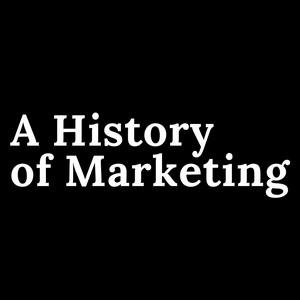
Hol dir die kostenlose radio.at App
- Sender und Podcasts favorisieren
- Streamen via Wifi oder Bluetooth
- Unterstützt Carplay & Android Auto
- viele weitere App Funktionen
Hol dir die kostenlose radio.at App
- Sender und Podcasts favorisieren
- Streamen via Wifi oder Bluetooth
- Unterstützt Carplay & Android Auto
- viele weitere App Funktionen


A History of Marketing
Code scannen,
App laden,
loshören.
App laden,
loshören.

